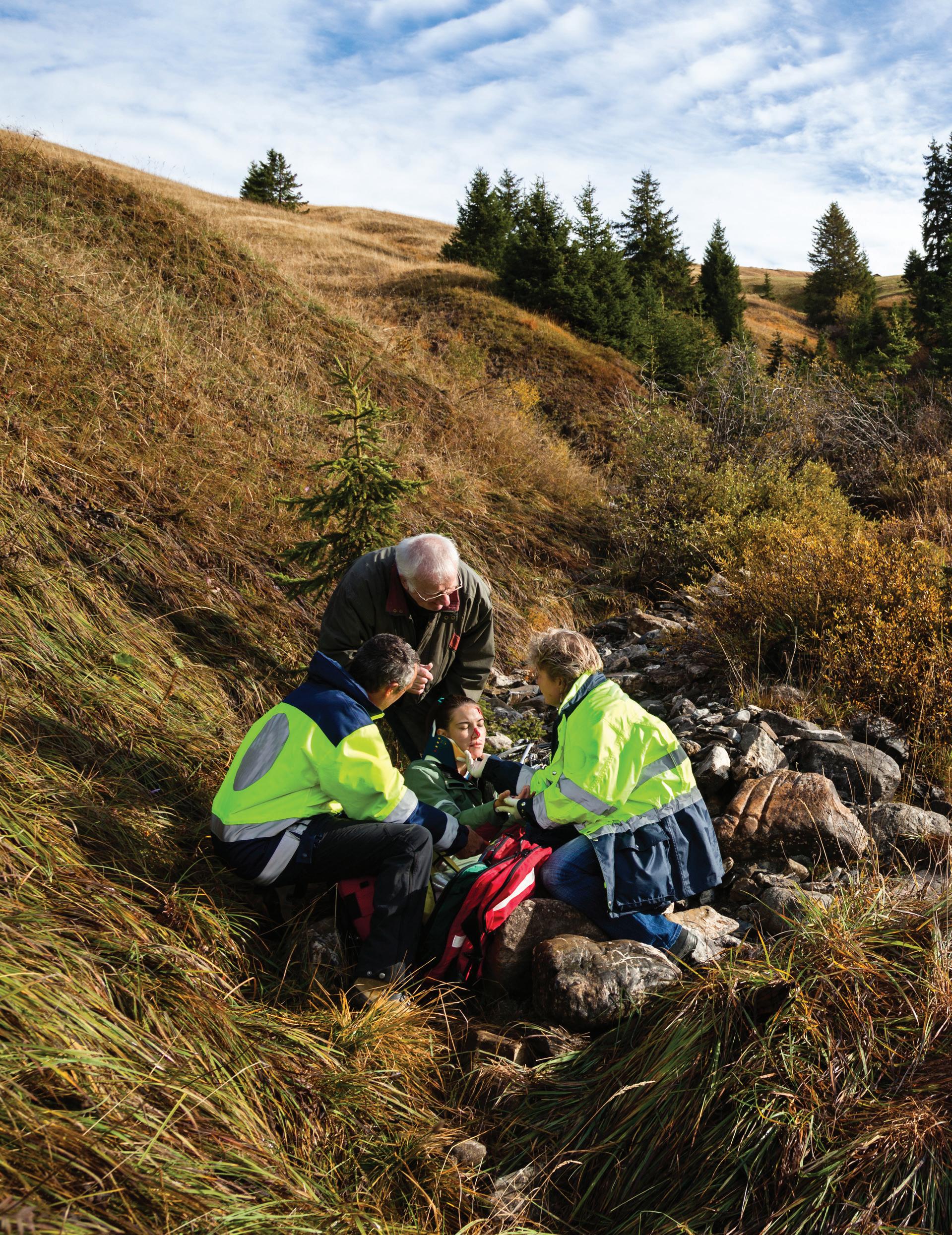
CERT RESPONDER MAGAZINE ® for sUAS Search and Rescue Benefits County Residents Serving Those Who Serve Their Communities Spring 2019 Augmented Reality Mass Notification System United Hatzalah: Unite & Rescue Not Just for Search & Rescue And How It Started Tracking: S.T.O.R.M. Search & Rescue CERT Saving Lives In a Matter Of Minutes Louisiana Storm Patrol Louisiana Cajun Navy



Mission:
CERT Responder Magazine is dedicated to providing CERT and first responders with information and tools to assist communities in times of crisis, as well as offering a platform for responders to share their stories.
Staff


PUBLISHERS: Bob Abrams, Fran Sherman Chris Wahoski
CONTRIBUTING WRITERS: Dietrich Biemiller, Robert LoRee III, Jay Manley, Colene McEntee, Brett Postelli, Mark Rosenblum, Linda Spall
EDITOR/CREATIVE DIRECTOR: Fran Sherman
DIRECTOR OF MARKETING: Bob Abrams
OFFICE MANAGER: Chris Wahoski

06 26 14 22 21 17 30 26 05 08 09 10 33 12 24 34 Departments Features
Inside
Tracking: MassNotification System Augmented Reality for sUAS Search and Rescue United Hatzalah: Saving Lives In a Matter Of Minutes Search Markings? Storm Search & Rescue/CERT And How It Started: Part 1 ®CERT Responder All rights reserved. Photocopying, reproduction, or quotation strictly prohibited without written consent from the editor or editorial committee. Unsolicited material and/or correspondence cannot be acknowledged or returned, and becomes the property of the CERT Responder. The purpose of this publication is to provide a quality publication that educates, informs and connects the CERT and first responder community in the time of crisis, as well as offering a platform for responders to share their stories. To provide comments about CERT Responder Magazine, contact chris@certresponder.com. Product Spotlights Book Review Why Knot? Teen CERT CERT Spotlight AshBritt’s Safety Corner CERT on the Road Marketplace The official publication of CERT Responder Magazine, LLC. CERT Responder Magazine 2464 Taylor Rd., Suite 202 Wildwood, MO 63040 www.certresponder.com To contact to editor Fran Sherman, send email to fran@certresponder.com SUBMIT YOUR STORY: certstories@certresponder.com ADVERTISE: advertise@certresponder.com SUBSCRIBE to CERT Responder:
Unite and Rescue! Louisiana Storm Patrol / Louisiana Cajun Navy Not Just for Search & Rescue Benefits County Residents Do You Remember Your
www.certresponder.com/subscribe
Letter from CERT Responder Magazine
Greetings Subscribers,
We have certainly had some unusual events recently with fires, hurricanes, unusual changes in weather events, etc. We at CERT Responder Magazine are hopeful that our readers will share stories of how their teams and/or the first responders they work with have been affected by the above-mentioned situations, and how their teams were used in these situations.
Your stories and training tips can help other teams around the world learn from what your teams did—what worked and what did not. Please feel free to contact CERT Responder Magazine with any questions about submissions.
On another note, please remember to take CERT Responder with you during your travels or with your team training. Take a picture of you or your team holding a current edition of CERT Responder Magazine, and if your photo is chosen to be in an upcoming edition of the magazine, we will send you a CERT Responder Magazine T-shirt.
Finally, we are always looking to recognize those who have done outstanding work for their teams. This could be anyone from the leader or instructor of your team to a team member. Please submit your outstanding person, and we will give them notoriety in the CERT Spotlight portion of the magazine.
As always, thanks for subscribing to CERT Responder Magazine, and thanks for serving your communities!
“Serving those who serve their communities” CERT Responder Magazine
4 CERT Responder Magazine





CERT Emergency Lighting 800-308-0994 propacusa.com Inflatable Light Towers • Lightweight • Powerful • Affordable Dragon Series Light Towers Mount to vehicles for transport and deployment. Attach to hitch receiver or permanently mount to emergency vehicle. Item X1158 LightHouse Series Light Towers 6 Models Available Item X1150 Portable LED Scene Light Hand carry, rapidly deploy to 6 ft high 3600 lumens of light power AC/DC Rechargeable Item D5142 6 ft
person can carry and set up these inflatable light towers in minutes. Illuminate a wide area 360° with up to 110,000 lumens light power. Internal fan inflates tower in 20 seconds. Ideal for emergency response, search and rescue or any scene that needs a quick, powerful and convenient light source. PRODUCT SPOTLIGHT
One
UNITE & RESCUE!

Louisiana Storm Patrol /Louisiana Cajun Navy
BY LINDA SPALL
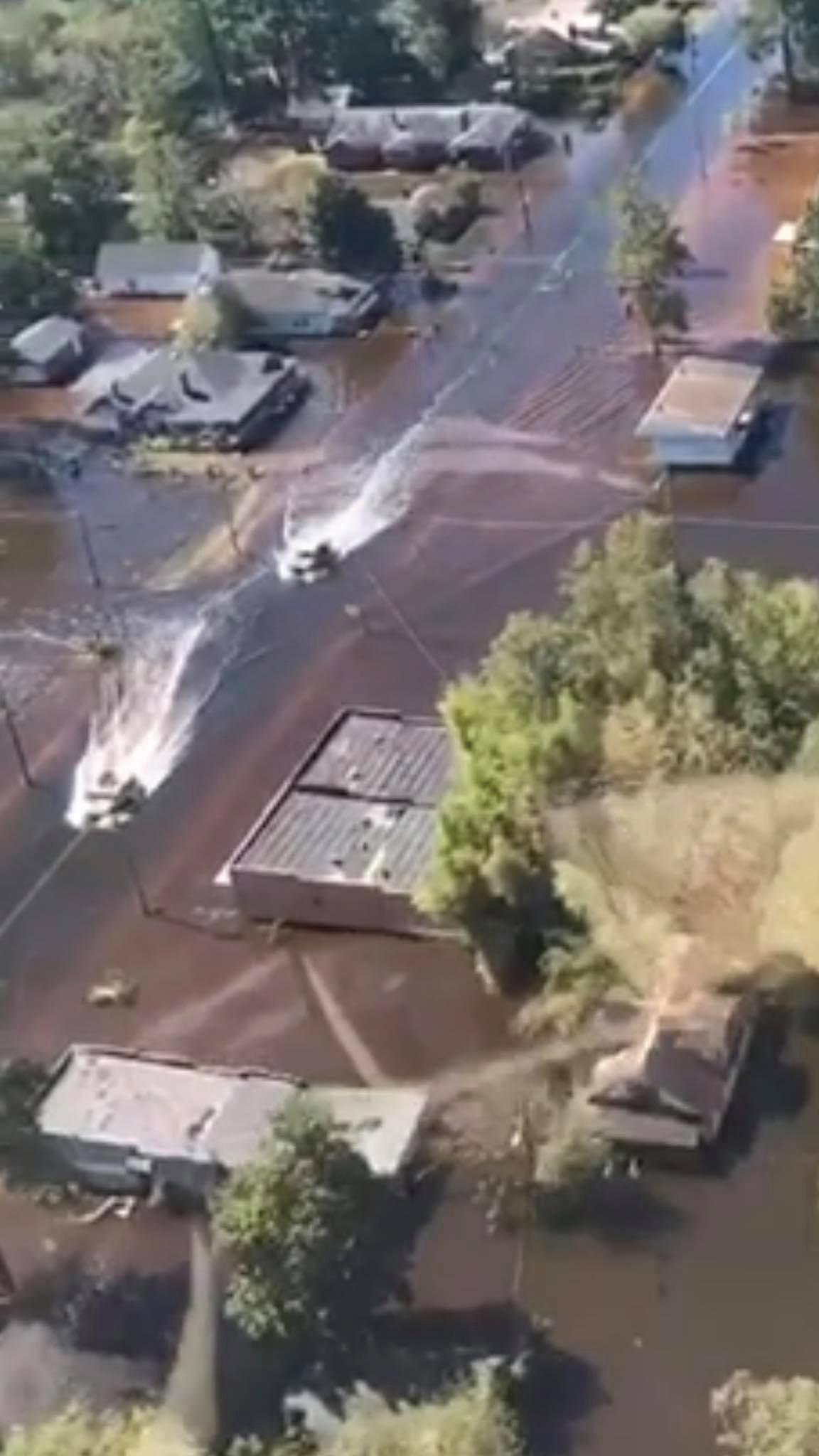
Imagine your home flooded with water, gathering any survival supplies you can collect, your children and if possible, your pets, then going to the highest point of your house, hoping for rescue. Around you are people trapped inside attics or standing on rooftops, watching cars and actual bodies floating past, with no clean water and little food. No escape just rushing water everywhere. Then you see a fishing boat.
Help is on the way. Enter Clyde Cain and the Louisiana Cajun Navy.
On August 29, 2005, Hurricane Katrina caused an epic devastating storm surge in the area of Lake Ponchartrain, which is located in the southeastern part of Louisiana. Surrounded by the parishes of St. Tammany, Orleans, Jefferson, St. John the Baptist, St. Charles, and Tangipahoa, water levels rose 8.6 feet above sea level. Levees broke. Widespread flooding occurred in homes and businesses, stranding residents. Overwhelmed, citizens were without power and ways of communication, as telephones, many cell phones, and the internet were not working
because of power failures and line breaks. Roads were not navigable.
Clyde Cain owned a boat. He is from Hammond Louisiana, the largest city in Tangipahoa Parish, about 45 miles east of Baton Rouge and 45 miles northwest of New Orleans. His buddies also owned boats, and Clyde knew they had to do something because it might take hours for help to arrive. Soon, an armada of duck, fishing, and hunting boats; airboats; and some boats with motors and some without; headed out to help with whatever equipment they could muster. Others joined in. The media dubbed these and other independent volunteers the “Louisiana
6 CERT Responder Magazine

Cajun Navy”. Clyde’s first endeavor was picking up people and taking them to a church for safety. Fourteen years later, Clyde Cain is still at it.
Though the Louisiana Cajun Navy name still exists, the name became blurred by the media with other groups who have no affiliation. So Clyde is also updating and operating a 501-C3 under the name Louisiana Storm Patrol in order for clarification and organization. He has his hands full. Now, they have more sophisticated equipment and easily identifiable tee-shirts. They offer educational survival help, and they collect and deliver donations. They also have vehicles that will travel to where help is needed, as well as better communication techniques and equipment. He has designed programs that document and help with dispatching and logins, and he maintains a Facebook page and web site with videos that are used by victims reaching out frantically to be rescued.
Just to name a few deeds these volunteer first responders perform, they assist with FEMA, work with Homeland Security, and still bring essentials to survivors. They have delivered 11,000 meals to 11,000
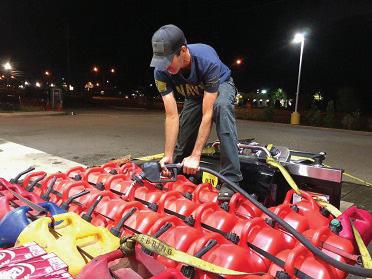
people in 11 days, helped rescuers with equipment and supplies, and assisted with guarding them. They’ve helped distribute heaters, rescued pets on a large scale, and delivered them to safety and transported much-needed fuel. They also delivered 3,000 pounds of water to Talulah, LA when they needed it, and cleared 15 trees resulting in 75 tons of timber.
The opening statement on the web site explains it all. “We the people of Louisiana refuse to stand by and wait for help in the wake of disasters in our state and the country. We rise up to unite and help rescue our neighbors…. We don’t wait for the help. We ARE the help! From the underprivileged, the homeless, and all veterans in this country, we won’t stand by and watch another person suffer, struggle, and fight while the world passes them by.”
Clyde is a busy man. He’s the real deal, genuinely, sincerely making a difference. We talked on the phone while he was on his way across the state to Texas. He is often invited to speak and share the incredible stories of rescue and the importance of each of us helping each other. He lets us all know that we have the pow-

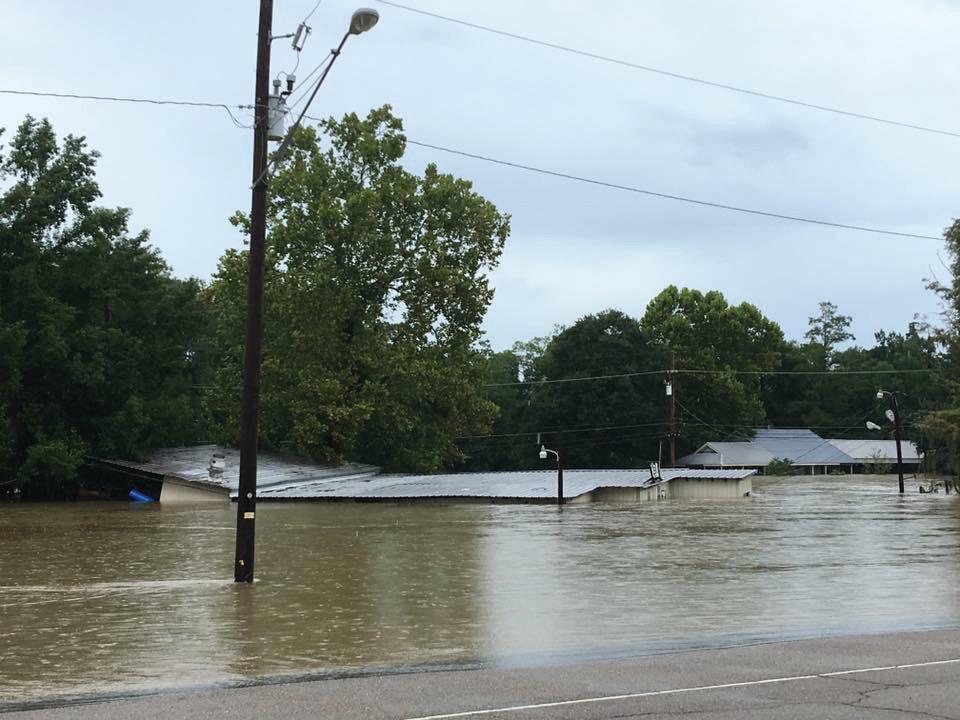
er to take care of our corner of the world: recruiting volunteers, handling the communication and organizational needs (supplies, vehicles, boats, personnel, accounting), all the while traveling from point to point, delivering, transporting, and speaking. Working with organizations who will assist the Louisiana Storm Patrol by donating goods and services can be a full-time job alone.
Yet Clyde Cain gives all the credit to his friends and volunteers and humanity, itself. The theme is clear. We have an obligation to help if we can, watching out for each other, providing basic needs when they are needed the most. His respect for the veterans who have used their bravery, skills, and assistance in times of need is impressive and honorable
Funding is mandatory. The operation exists solely on monetary donations and the public and private giving of the supplies, vehicles, services, time, and equipment that are utilized when helping victims.
Donations can also be mailed to Louisiana Cajun Navy 1905 West Thomas St. D202 Hammond La. 70403 http://www. louisianastormpatrol.com/ CERT
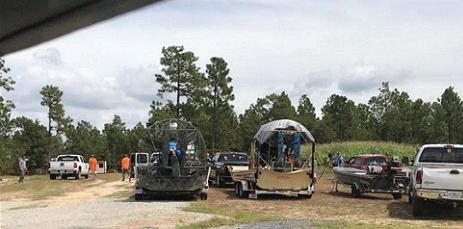
CERTResponder.com 7
A Hero Lives in My Family:
A Story for Kids of First Responders
BY DR. SUSAN HUNT
Choosing books to review for CERT Responder Magazine has been quite a journey. We have carefully selected books which we hope will inspire us, increase our understanding, attain knowledge, and broaden our views. When I found the children’s’ book “A Hero Lives in My Family” written by psychologist Dr. Susan Hunt, my first thought was how sweet to have a book which explains the jobs of parents who are first responders. But upon opening this 8 and ¼ inch tall book and reading the simple words, seeing the expressive, illustrations (the responders and families are adorable canines who express love, anger, pride, and a range of emotions) I was absorbed and enlightened! “A Hero Lives in My Family” has such a deeper purpose than merely introducing a parent’s occupation.
Dr. Hunt has a masters in counselling psychology, bachelors in psychology, and is a member of the College of Psychologists of British Columbia and the British Columbia Psychological Association. She specializes in helping first responders and their families by teaching and giving personal assessments and treatments which assist with mental health, wellness, and resiliency. She also teaches courses to police officers, and is a valued speaker regarding the special issues that face first responders and their families. She knows firsthand, as she also lives in a first responder family.
Understanding the emotions and effects of the job on family members as well as the responder himself/ herself, “A Hero Lives in My Family” written simply for the very young, lightly

explains the responder’s job to save, help, serve, and protect others. That concept alone is enough to put a child in awe, and yet also, perhaps, evoke feelings in a child who will worry about the parent’s safety, or sees the parent as emotional, tired, or unable to express properly what a child can only guess and easily misinterpret.
How can a child process the job of a first responder and the effects on the family? Dr. Hunt has, with the help of Addie Storm’s wonderfully sweet illustrations, tenderly shown how important the child is to the responder, and the happiness of a hug and the time spent with the child.
“I like my job a lot because I get to solve problems and do good things. I love to help others and see the happiness it brings.” Or “Sometimes my job makes me feel worried and scared. But when I come home and see you, I feel relaxed and happy for the time that we have shared.”
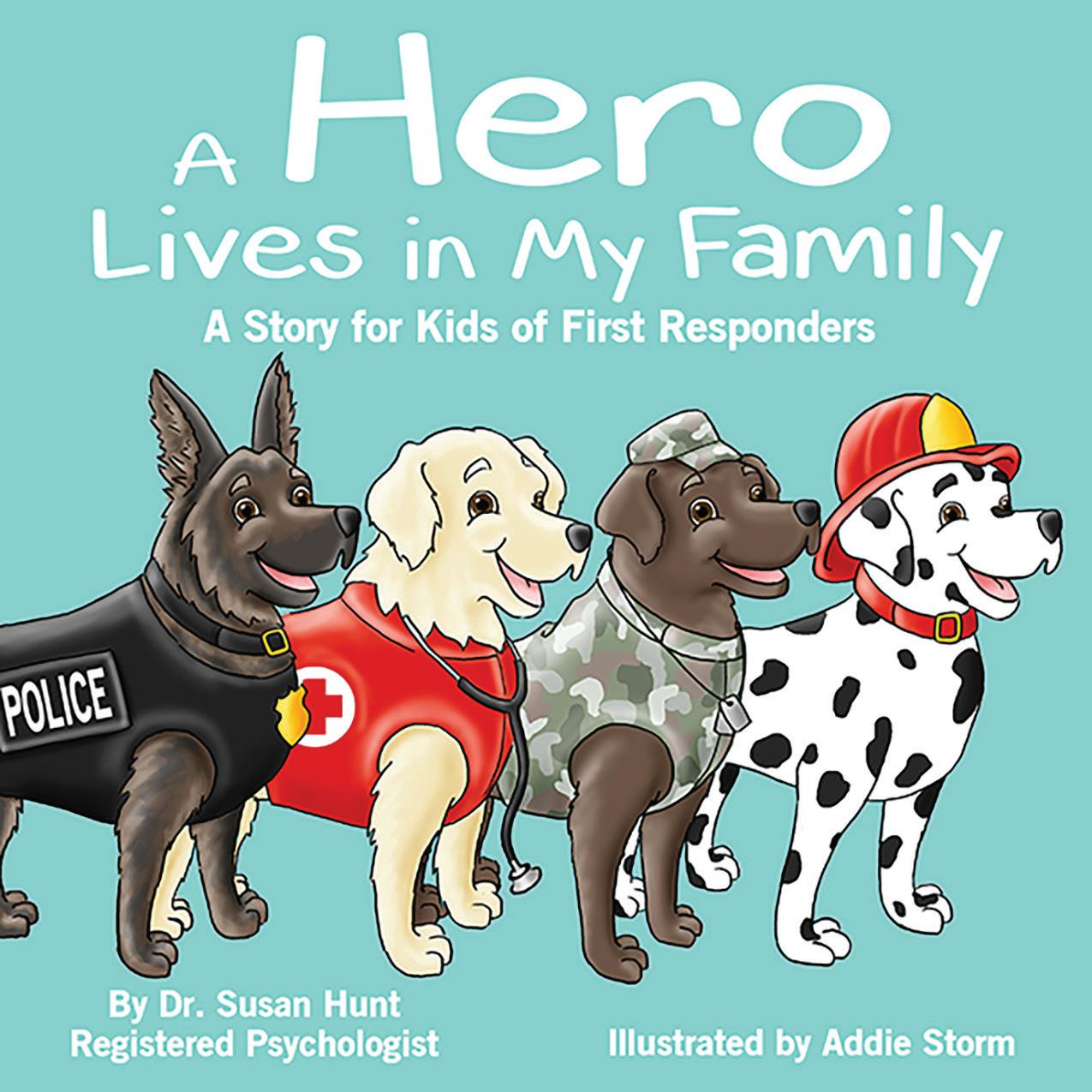
These precious words are gifts to both the responder and the child, and Susan Hunt has chosen a perfect approach to help both understand and spend time exploring each other on the inside.
I strongly advise getting the accompanying workbook. In it, there are interactive activities that you can do with your child that help both the responder and child to bond, empathize, cope, and handle stress by positive thinking. The activities show the importance of sleep, stress management, and resilience, and simply spending time together trying to understand each other. To find out more about this series of books, check out www.kidsheroseries.com. Books are also available on Amazon.com. CERT
8 CERT Responder Magazine BOOK REVIEW
www.kidsheroseries.com
BOOK REVIEW WRITTEN BY LINDA SPALL
Susan Hunt
why KNOT?
THE FIGURE 8
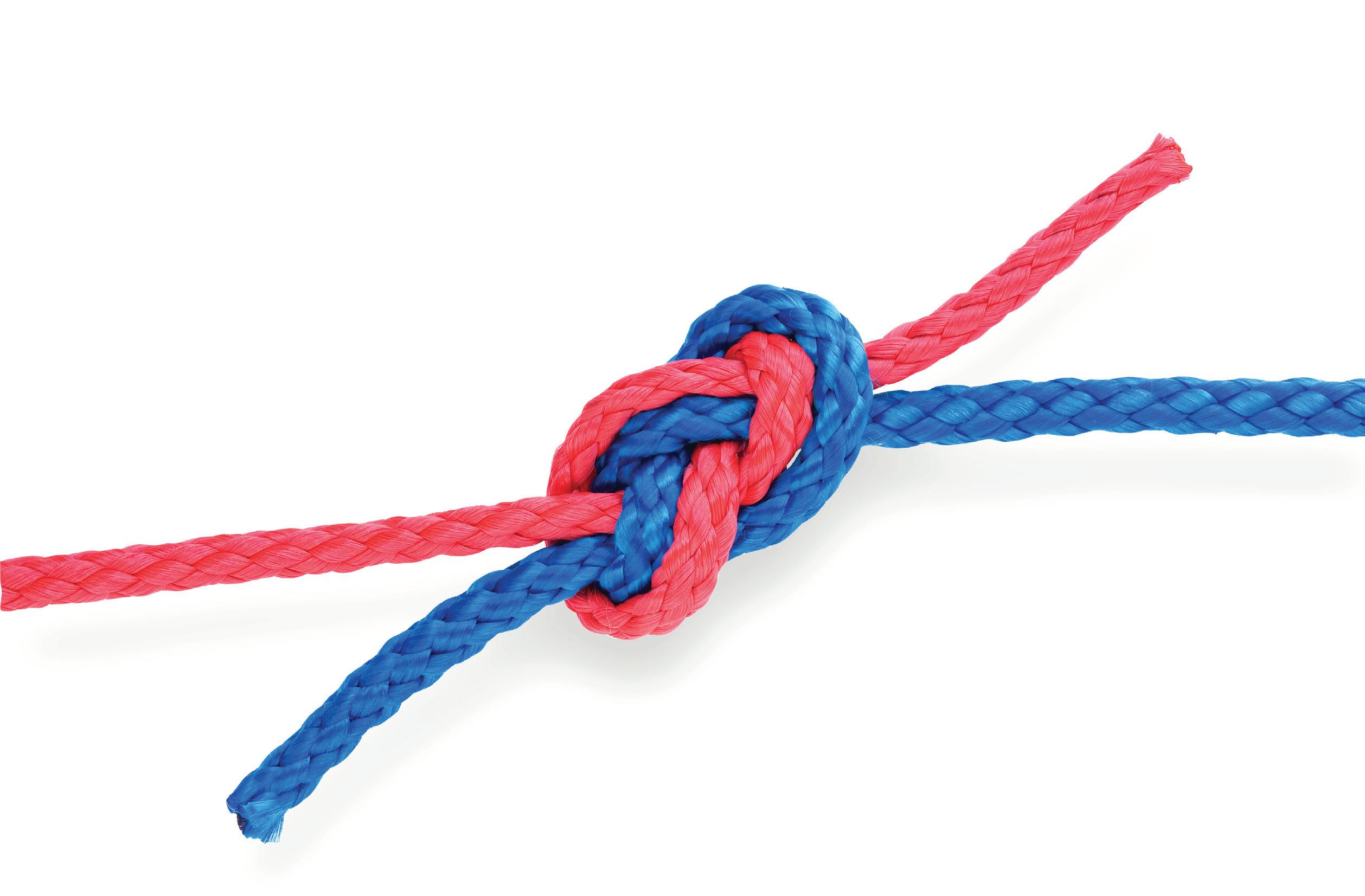
USES
PART 7 IN OUR ONGOING SERIES
The FIGURE 8 (also called the Flemish knot) makes a stopper knot at the end of a line, and it’s necessary to use this knot in order to tie several other more complex knots. It is very important in both sailing and rock climbing as a method of stopping ropes from running out of retaining devices.
• This is the most widely used tie-in knot by mountain climbers because it is strong, secure, and easy to visually inspect
• Climbers often further secure it by tying a Back Up Knot with the tag end.
• A single Figure Eight also makes a good “Stopper Knot” at the end of a rope tightened at a new position.
INSTRUCTIONS
1. Make a loop with an end.
2. Pass the end through the loop.
3. Pull both sides to adjust the knot.
4. The finished knot resembles an “8”.





CERTResponder.com 9
2 3 1 4
MID AMERICA TEEN CERT: TRAINING THE ENTIRE COMMUNITY IN EMERGENCY PREPAREDNESS
 BY MARK ROSENBLUM, MID AMERICA TEEN CERT DIRECTOR
BY MARK ROSENBLUM, MID AMERICA TEEN CERT DIRECTOR
The Mid America Teen Community Emergency Response Team, based in western St Charles County, MO, has had an exciting previous 15 years. Now in its sixteenth year providing emergency planning and response training to thousands of teen and adult students, the nationally-acclaimed program has added several new attributes to their already robust repertoire.
10 CERT Responder Magazine
One of the newest features added to Mid America TEEN CERT is the addition of the programs’ hybrid training and response trailer, which has the capability to deploy not only to classes, but also mass casualty incidents and disasters if called upon. The ‘most-situation’ vehicle is equipped with supplies to assist first responders in serious emergency events, and has the sleek appearance to present itself nicely in events and parades. The trailer will eventually have onboard satellite and communications to operate as a mobile command unit as well if needed.
Another benefit to the training is the inclusion of several badge requirements for members of the American Heritage Girls (www. americanheritagegirls.org), such as Emergency Preparedness, Fire Safety Building, Survival Search and Rescue, Outdoor Skills, and All God’s Children. Mid America TEEN CERT already includes several Boy Scout merit badges in the curriculum, such as Emergency Preparedness, First Aid, Fire Safety, Safety, Disabilities Awareness, Search and Rescue and Wilderness Survival; requirements for Girl Scout and 4H badges are also built in to the training as well.
Students that participate in the program are trained to handle all emergency situations. Mid America TEEN CERT (MATC), is intended to teach teens and adults students to assist efficiently and effectively in the event of an emergency or natural disaster, without putting themselves or others in any unnecessary danger.
Volunteers completing the MATC program gain important skills, empowering them to help in any emergency situation that can arise in everyday life. Within the training, students learn how
to handle extreme life-threatening medical events, perform search and rescue, put out small fires, organize volunteers assist people with special and functional needs, prepare for acts of terrorism, and collect disaster intelligence in order to support the efforts of first responders. Instructors include paramedics, firefighters, doctors and other qualified professionals, such as a professional counselor to teach the vital element of psychological preparedness in disasters.
Mid America TEEN CERT is vastly different in approach, delivery and content than the “adult” program, even though the course uses the same basic FEMA G-317 foundation. Both teen and adult students who complete TEEN CERT training come away with far more than simple emergency response skills and learn many valuable lessons that can have a lasting impact on their lives.
The program teaches an average of 7-8 training classes and 12-15 philanthropic events per year. Each Mid America TEEN CERT class is 2224 hours and is personally designed to suit the individual organizations’ needs. The average size of each class is 25-30 students.
One of the unique aspects of Mid America TEEN CERT, is that the program has operated entirely without any outside funding since its beginning and remains one of the most popular youth programs in the nation. With thousands of volunteer participants, Mid America TEEN CERT was selected in 2018 as the No. 1 Emergency Preparedness Program and Youth Program in Missouri for the seventh straight year, and achieved the recognition as No. 1 Emergency Preparedness Training Program and Outstanding Youth Training Program in America for the fourth straight year.CERT
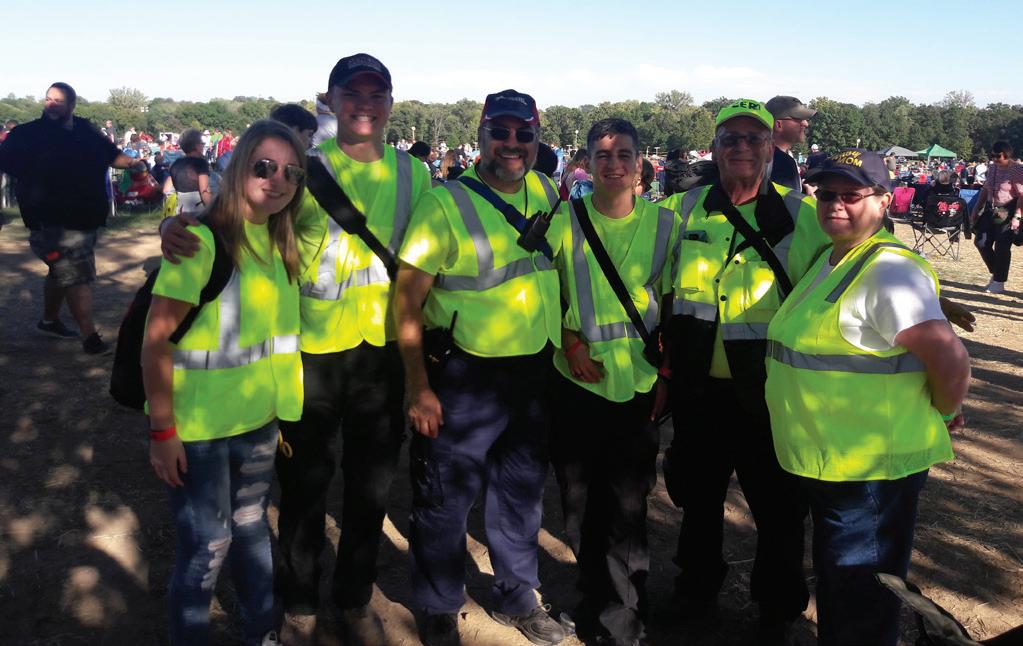
Medical Team at Pyromania
2019 Training Dates and Locations
Mid America TEEN CERT training is free of charge and open to anyone who is at least 12 years and older Trainings are usually held in and around the St. Louis region. There are currently seven upcoming training sessions scheduled for 2019 (with two more being finalized). Dates and locations include:
• Ozark Trailblazers District, April 12-14, 2019 at S-F Scout Ranch, 120 US-67, Farmington, MO
• Troop 677, May 3-5, 2019 at Beaumont Scout Reservation, 6480 Beaumont Reservation Drive, High Ridge, MO
• Troop 853, May 17-19, 2019 at Wentzville FPD Station #3, 1146 Clinton Prinster Memorial Drive, Foristell, MO
• Troop 390, August 2-4, 2019 at Location TBD
• MO ARNG CYP (National Guard), September 13-15, 2019 at Patriot Center, 2405 Logistics Road, Jefferson City, MO
• AHG Troop MO1880, Dates TBD at Immaculate Conception Church, 7701 State Highway N, Dardenne Prairie, MO
• Chamberlain University School of Nursing, Dates TBD at SIUE Edwardsville, Maryville Campus, 650 Maryville University Drive, St. Louis, MO
• Macon County Health Department, Dates TBD at Macon County Health Department, 503 N Missouri Street, Macon, MO
• Troop 553, November 1-3, 2019 at Location TBD
Proper preparation and training can play a crucial role in protecting ourselves and our community. Emergencies can be terrifying, but with the proper preparation and training, even the worst situation can be manageable when responded to confidently and effectively.
For further information about Mid America TEEN CERT, classes or events, and donating, contact program director Mark Rosenblum at mark.rosenblum@outlook.com, @TEEN_CERT, or visit www.facebook.com/groups/MIDAMERICATEENCERT.
CERTResponder.com 11
CERT SPOTLIGHT

Focus On
Joshua W. Maddox
Fire Inspector and Investigator for Frenchtown Township Fire Department Southeast Michigan
Joshua is a Fire Inspector and Investigator for Frenchtown Township Fire Department located in Southeast Michigan where he has been employed for 18 years. Prior to his full-time employment, Joshua began his fire service journey at the age of 15 when he joined a local Fire Explorers group. This led to applying for the Whiteford Township Volunteer Fire Department immediately following high school graduation, where he received entry-level training and excellent experience.
Twenty-five years later, along with many other credentials, he is a 2016 graduate of Eastern Michigan University’s Executive Fire Officer School, and earned his Bachelor’s Degree at Siena Heights University majoring in Public Safety Studies and minoring in Professional Communications.
Aside from being a Fire Inspector, Joshua is a Certified Fire Instructor for the State of Michigan and is a parttime Professor for Schoolcraft College Fire Training Division. He also leads the Frenchtown CERT Program and has been the Director since its inception in 2011.
WHAT IS THE BEST PART ABOUT BEING A CERT COORDINATOR?
There are so many aspects I enjoy about leading our CERT program. However being part of the learning process is definitely among the top benefits as a leader and educator. There is something extraordinary about imparting knowledge to an individual or a group, watching it all come together for them as they are taught the practical or hands-on skills, and seeing them walk away from training with perhaps, a different or new perspective than they did walking into the exercise.
WHAT DO YOU CONSIDER YOUR GREATEST ACCOMPLISHMENT?
I have several accomplishments worthy of mentioning throughout my career in the Fire Service, however my greatest accomplishment is simply being a husband and a dad.
WHAT DO YOU DO FOR FUN?
I enjoy spending time with my family, investing in their lives along with being outdoors, working in the yard, hunting, and riding ATV’s. I also enjoy learning new things, working out, watching good comedy and sci fi movies, and listening to a variety of music.
HOW CAN THE PUBLIC SAY “THANK YOU” AND MAKE YOUR WORK EASIER?
As some are aware, the public safety system has the potential of being overwhelmed during large scale emergencies. The public can express appreciation by being prepared for small localized emergencies along with pre-planning for large scale disasters, as this helps alleviate the burden on response agencies.
They can also attend free classes that we offer in efforts to assist with emergency preparedness, and creating a more resilient community by simply visiting our Facebook page and contacting us.
WHO HAS BEEN YOUR GREATEST INFLUENCE?
I am very blessed to have many great influences in my life, both professionally and personally, that have invested their time, efforts, and knowledge making me the person I am today. It is a community of people that continually challenge me to meet and exceed higher levels, going beyond my “comfort-zone”.
My wife and children are probably the single greatest influence in my life, directing my thoughts, decisions, and actions. Their continuous love and support are crucial to my existence, and to express my gratitude to them is beyond impossible. CERT
12 CERT Responder Magazine


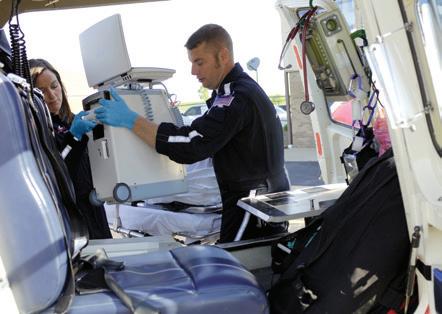

CERTResponder.com 13 ACCESS. QUALITY. SAFETY. WHEN YOU NEED IT MOST. Name:_____________________________________________________________________________________________________ Company:_________________________________________________________________________________________________ Address: ___________________________________________________________________________________________________ E-mail address: _______________________________________________Telephone: __________________________________ Payment Method: ❏ Check ❏ Charge: Credit Card Number:__________________________________________Expiration Date:_____________Security Code:_______ How did you hear about us? __________________________________________________________________________________ Subscribe Now! SUBSCRIBE ONLINE to CERT Responder: www.certresponder.com/subscribe MAIL PAYMENT OF $24.99 TO: CERT Responder Magazine | 2464 Taylor Rd., Suite 202 | Wildwood, MO 63040 CERT RESPONDER MAGAZINE
Augmented Reality
Part 3
BY JAY MANLEY
for sUAS Search and Rescue

In late August, 2018 I was asked to evaluate a somewhat new offering by EdgyBees (https:// edgybees.com/). Now typically when I’m asked to review software, it tends to be one product. What made this software unique is that it’s three separate products that each have unique functions, but also work together in one total solution.
The first product is called First Response Command and Control (C&C). As an incident commander (IC), I instantly recognized the value of this product. It gives you an overview of all deployed assets that it can track. You can see what is going on and help direct resources over time as more information comes in and resources are deployed. Typically IC’s end up waiting for people to return or call in at specific times to get more data on what’s going on. This gives you instant details into the ongoing mission.
The next piece of the puzzle is First Response Tracker. When this is installed on everyone’s mobile phone, it gives the exact GPS location of the phone and can be seen on the C&C station overlayed on a map. This is fantastic to know when conducting a search and wondering where potential mission staff afoot is compared to either a target, waypoint, or hazards. Yes, you can see the assets moving on the C&C screen!
The final product is First Response Pilot. This is the software that you use to fly your drone with and also updates C&C with its location information and, at the discretion of the pilot, can create
labels of points of interest. One of the most interesting feature of this software is the augmented reality that it utilizes to overlay the streets (and their names), as well as other objects of interest.
Now, my background is in Search and Rescue, so my testing and application may be different from what you would consider using this for. I can easily see this as a great asset for police, fire, emergency response teams, rescue teams, and a host of other uses that I probably haven’t even though of yet! If you need to keep track of team members in an augmented virtual reality environment – meaning you can see maps of the location as well as the details of where each asset is in relationship to each other and points of interest – this might just be what you need.
For my testing, I focused on two typical search and rescue efforts that varied only by their location. One location would be an in-town search, and one location would be a search in the country. It would be a search for Mr. Foamy – A 4” thick foam sheet cut in a rough human outline and then outfitted with blue jeans and a red shirt. For the in-city search, and because typically these
14 CERT Responder Magazine
types of searches tend to be quick and close, I opted to test with my Mavic Pro. Why? My thought is, as a first responder, I am more likely to have the small Mavic in the back of my car (or in my trunk) than I am the large case that holds my Phantom. The second test was looking for Mr. Foamy in a cornfield. Because of the larger area and more duration required, and the ability to fly a bit faster, I opted for my larger (and more capable) Phantom 4 Pro v2 for this country search.
For the city test with the Mavic Pro, I had a friend place Mr. Foamy in a window well that was about 5’ deep to simulate someone falling in and breaking their leg and not able to get out. I knew that it was somewhere in a two-city block area. Tree and bush coverage did limit visibility and it was an overcast day with winds at 10 gusting to about 14 mph. With C&C man-
aged by a CAP IC, I turned on my Tracker and began my search.
Flying a “creeping line” search, with the gimble turned 90 degrees down and an altitude of about 120’, I flew the “long way” down the two long blocks, and then would move over 30’ and fly back to me, and I kept doing that until I saw a flash of red that was unexpected. I was at about 1/3 battery life left when I located my target. I descended to about 40’ (rooftop level) and realized that this was clearly my target. I marked the location on my screen and sent a second resource to that location to “rescue” Mr. Foamy.
On the cornfield test with the Phantom 4, I opted for a grid search at 150’ with 75’ spacing, giving me some good overlap. The first time I flew it N to S moving W to E. I was no joy on locating Mr. Foamy and had consumed two batteries. But, I
know that Search and Rescue probability of detection is not 100% on an initial search. And even though this day was nearly clear, with just popcorn clouds, and almost no wind, there is always the chance that the wind blew the leaves just enough to conceal my target. So on the second attempt, I switched to W to E paths moving N to S. Basically crisscrossing my other passes. I also increased to 200’ but with 100’ spacing. Part way through the 2nd battery on this search, I saw something just barely and immediately marked where I was, then I descended to about 25’ and I could see Mr. Foamy looking back at me, with his penned smile looking happy to see me. Two successful searches, with varied conditions and effort required.
SO, WHAT DID I LIKE?
• The ability to track resources in the field

CERTResponder.com 15
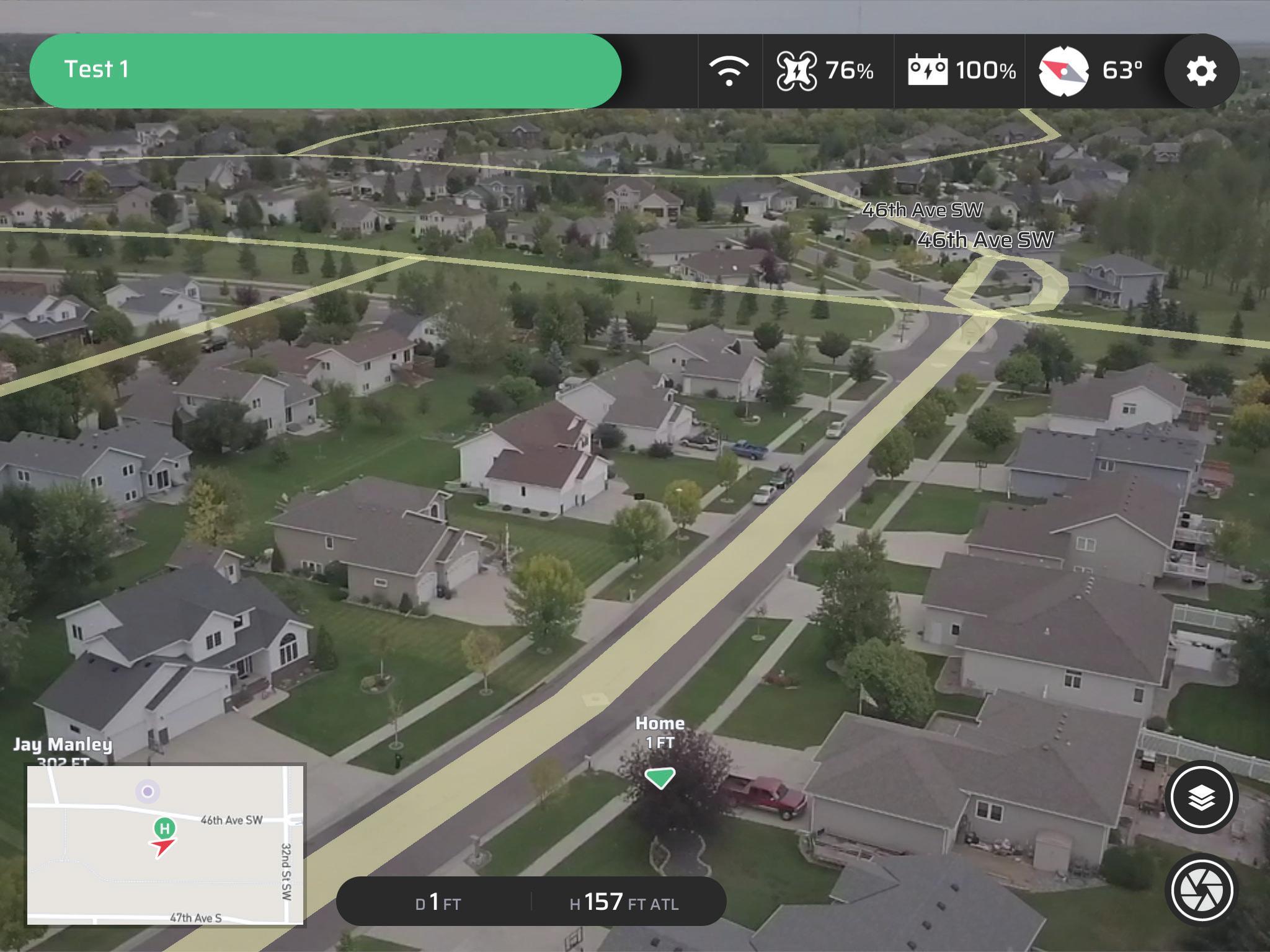
with the C&C module is fantastic and gives great insight. I can see using it for hasty line searches in rough terrain to be able to get a great idea of what they might have missed.
• The ability for me, flying the drone, to be able to “mark” targets or points of interest and they appeared to the C&C IC. When I entered the markers, he was instantly able to understand what I was doing.
• In the city search, I loved the augmented reality that overlaid the local streets onto my screen as I flew. I can’t wait to see what this does in the future! This WILL change SAR forever.
SO, WHERE DO THEY NEED IMPROVEMENTS?
• This is always hard to do, but I would like to see the UI cleaned up a lot. It’s OK, but it has so much potential to be better. This will likely occur incrementally as they add features.
• It would be nice to be able to re-size things easily, like the size of the location(s) of those using Tracker so that when I have a lot of resources moving I can make them fit on the screen more easily.
• For the flying portion, Edgybees is very clear that they don’t control the drone at all. It’s all hand flying. And as an accomplished remote pilot, I had no issue with this, but what I would like to see the software able to do in the future is fly search patterns that I specify, starting with a Grid pattern, but also Expanding Square and Creeping Line.
• I wish there was a way for the Pilot app to recognize colors (and understand the “shades” of colors). I would have loved for it to auto-fly the Grid search and stop and/or mark any location where it sees something related to the color that I picked in some setup window with a color wheel type setting. For instance, I’d have liked to be able to pick a red
color and it would still recognize light red or blood red and use that as the only thing it looks for so that it could possibly fly faster and without my “eyes” on it. This would greatly enhance it in the future for all types of missions.
BOTTOM LINE
Using drones for search and rescue is still relatively new. And software to help support it is VERY new. What does that mean for us? Well, we have to use what is there now so that those building these tools for us can make it better and better. Where does that put the trio of products that I tested for Edgybees? Right now, at the top of my list. As someone that is not only a pilot, but also an IC, it’s hard to go wrong with this suite – and I think the future of their offerings is something that I’m going to pay close attention to. If you haven’t given them a look, I would strongly recommend that you do. CERT
16 CERT Responder Magazine


S.T.O.R.M. Search & Rescue/CERT
And How It Started (Part 1)
BY ROBERT LOREE III
This is the story of American citizens with a sense of duty and service to their community. The story of people with no quit in their blood. People who want to help others, to save lives. This is the story of S.T.O.R.M. SAR/CERT and how it all began.
As a young man I dedicated my life to the service of my country by serving in the US Army, 7th Special Forces Group, after my tour of duty I enrolled at the University of Michigan and studied political science but couldn’t get used to suits so I moved onto a 4 year trade school where I became a Journeyman Ironworker for 20 years.
Jumping out of planes in the Army and wrestling Iron as a Journeyman was hard on my body and resulted in a back injury that required three cages and multiple surgeons to repair. After seriously hard and painful physical therapy, and working up to long walks with my service dog, Bandit, sometimes 2 or 3 miles at a time, I defied the odds. You see I was told prior to my second surgery that I could not expect to be walking, much less hiking. It was during these walks that I realized I had been given a second chance and that I was supposed to make it count.
During my recovery, my time not spent in physical therapy was dedicated to assisting my father, Robert John Lo’Ree Jr., who had been ill. Most days consisted of driving him several miles and sometimes hours to doctor appointments and hospitals for testing and procedures. In May 2017, my Father passed. He, also a veteran, was buried at the beautiful and honorable Great Lakes Veterans Memorial Cemetery in Holly, Michigan. His final resting was honored by fellow veterans at his burial site with a 21-gun salute.
After his passing, I continued my recovery and my long walks with my dog Bandit. The passing of my father opened a large portion of my availability. This progressed the feeling that I had been given a second chance, and that I was supposed to serve the citizens of my country. However, I was in Michigan, learning to walk again, mourning the loss of my father.
CERTResponder.com 17
Company logo
Flood damage in Vidor TX

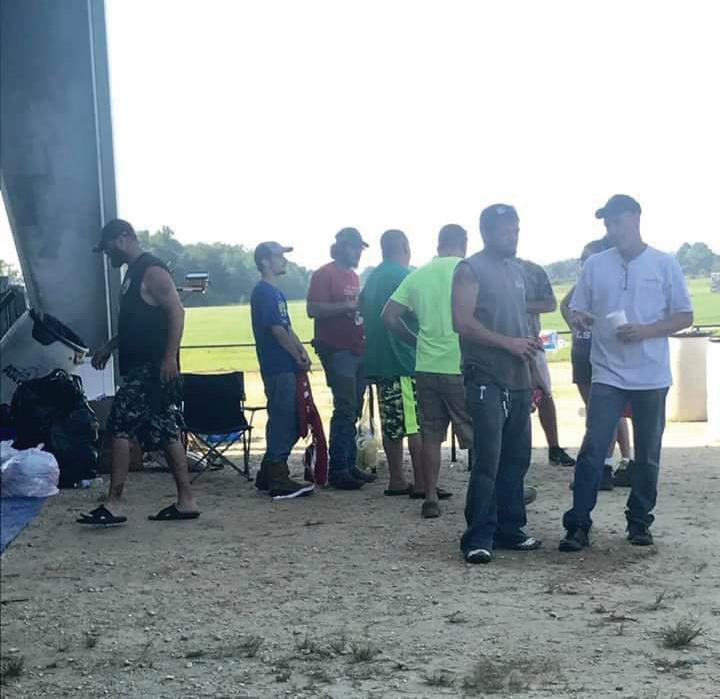
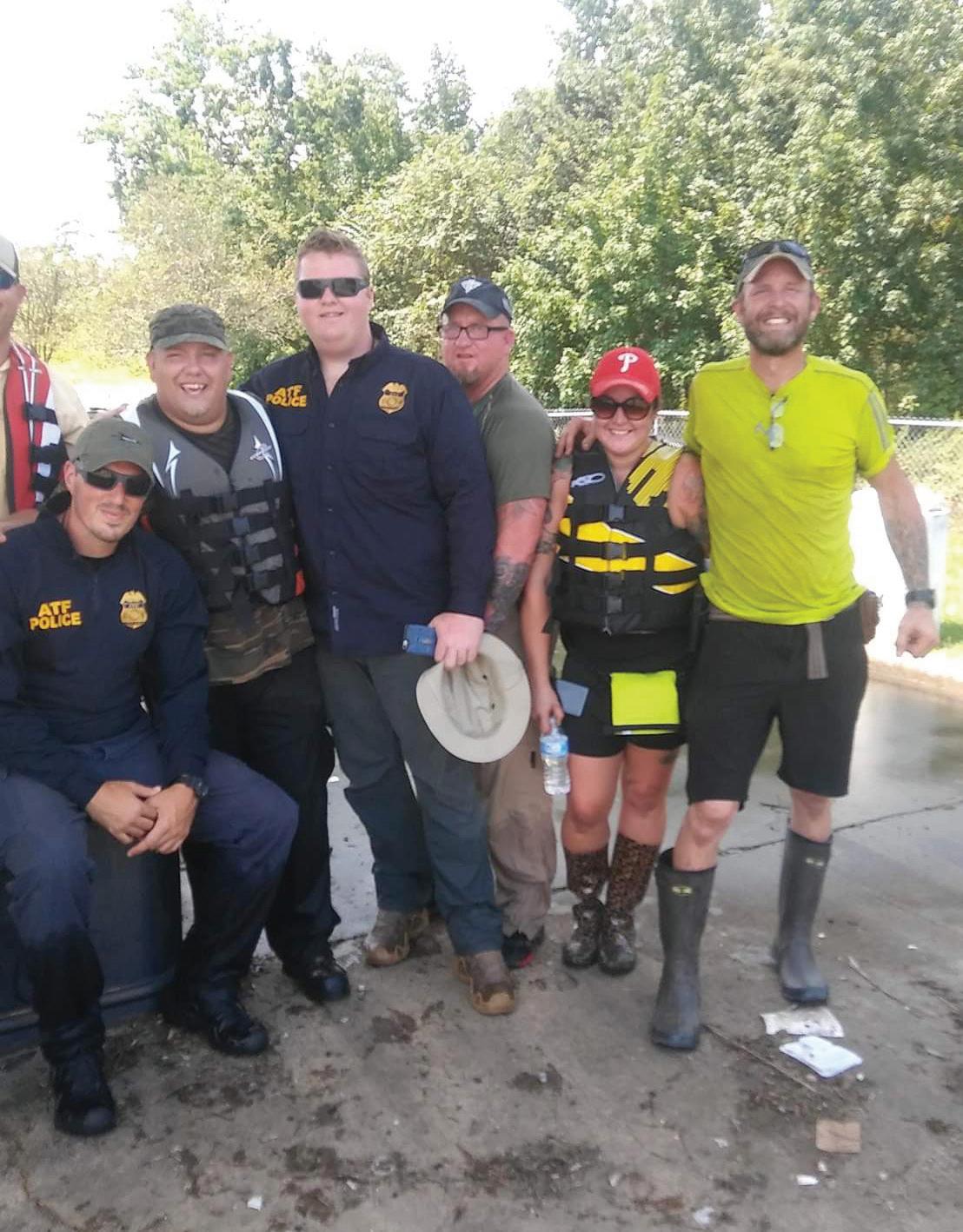
August 2017 my son, also an Army veteran, called me and told me about his potential self-deployment for what is now historically known as Hurricane Harvey that was being called a Category 4 or 5 at that time. He said he was going to the Texas/ Louisiana border to join a group of civilian volunteers that were performing water rescues. I said, “What? With who? How? You have no training, you’ll get yourself killed.” He proceeded to tell me about this group called the “Cajun Navy.” At that time, I had never heard of them, and was concerned for my son’s welfare and safety. Who were these individuals? Were they qualified to perform such water rescues? Texas was opening its arms to civilian volunteers due to the vast impact of flooding. Anyone who could help do anything was welcomed at this point. I convinced my son that we should go together. I told him I would drive if he would help pay for the expenses. I think this is why he called me to begin with. Besides having free time to spare, I thought it would be a good bonding experience for my son and I to have together. We loaded up the Chevy K3500 diesel dually, took off, and headed for Beaumont Texas where this particular sector of the “Cajun Navy” were meeting.
The ride down was pleasant, and I wish I could say it was uneventful. However, in Indiana we ran into mechanical issues. the oil pump on the truck went out. The unexpected cost of the $800 (OUCH!) oil pump was a hard pill to swallow. (Lesson 1: expect the unexpected). The oil pump was installed, we were on our way again; nothing was going to stop us from getting to Beaumont.

We arrived in Beaumont and to my surprise, there was a group of “Cajun Navy”: about 100 civilians with approximately 50 boats. They had set up a staging area at the local livestock auction barn, and were getting EOC dispatch calls for areas hit hard with flooding and reports of people needing rescue. The majority of these rescues were in rural areas with local volunteer fire departments that needed reinforcement. Most fire departments do not own their own equipment to perform such water rescues, and the majority do not possess the specialized training required. Texas was calling out for any and all boats to assist in this crisis.
My son and I joined up with a couple of guys from Louisiana in their boat. They had plenty of lifejackets, a fire extinguisher, and even a bullhorn, so people could hear from afar. (Lesson 2: Water Safety). I spoke with them at length to determine their capability before deciding to join them. I wanted to make sure my son and I were not getting ourselves into a situation that was even more dangerous than it was already going to be. NONE of us had experience in water rescue. I had grown up on a lake and had familiarity with water and watercraft. My son was also very good in water and a strong swimmer. After talking to these two men and the captain of the vessel, I concluded that they knew their way around water pretty well too. We were dedicated to saving the lives of others, whether it meant being certified and qualified or not.
The waters we were going to be navigating were not the still water on a lake that I was used to. These waters were rapid, and
18 CERT Responder Magazine
Flooded Texas
Planning the day’s operations
Posing with ATF and others after conducting several water rescues in TX
Trucks loaded up and ready for Florida!!
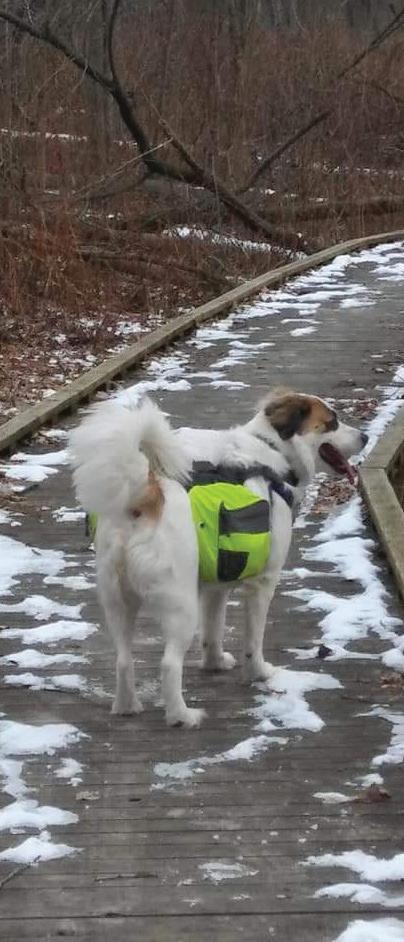
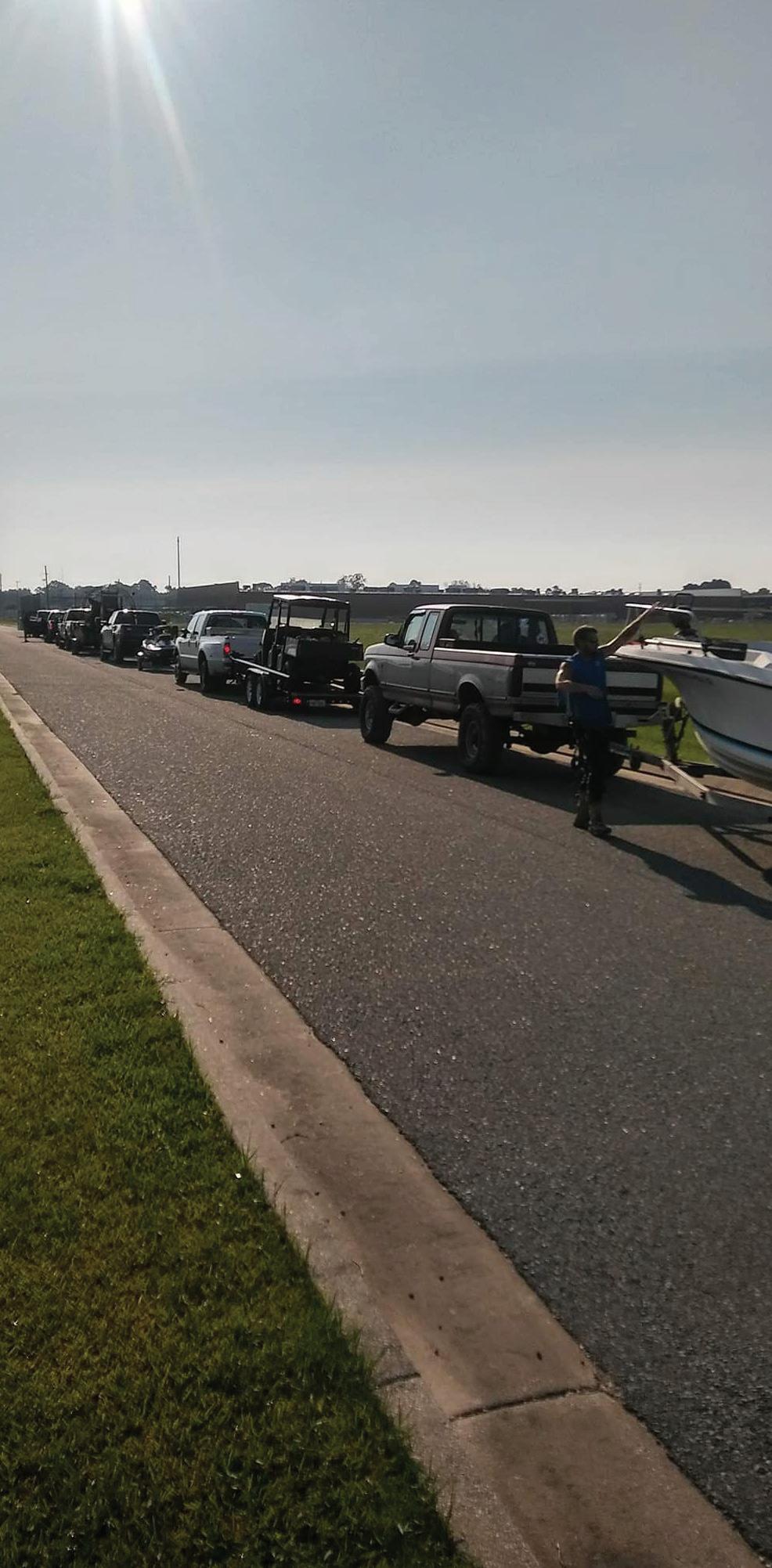
required meandering between houses and power lines, transformers, and submerged vehicles, making navigation extremely difficult and dangerous. Fortunately, the captain had grown up around the Louisiana bayous, and could maneuver his boat quite well. Having his local knowledge was definitely beneficial to our efforts. Early the next morning, all of the trucks and boats formed a large convoy and were waiting for the call from the EEOC. When the call came in, we drove about 30 miles to an area that had been flooded with water that was up to the second-story windows on some houses.
Upon arrival, people started putting their boats in the water right away. The majority were John boats which are relatively light and can be picked up by a couple of guys in most cases. The John boats and the jet skis were able to get in the water very quickly. It didn’t take long to realize that these smaller vessels were more ideal for these kinds of water rescues than the bigger crafts. The larger craft had to back up, find a ditch or some other place to push the boat off, and we weren’t putting our boats in at a normal marina or boat launch. We were at a gas station that had become an island, and we were putting our boat in on the road adjacent to it. We were not alone. I was surprised to see the ATF was there in addition to the Coast Guard and National Guards, and they were all happy to see us. There were a lot of people that needed rescue, and they did not have enough personnel equipment or resources to do it all. (Lesson 3: Government downsizing means less personnel, funding, and equipment). Many of the men

and women with their boats in this group of “Cajun Navy” were military veterans and had knowledge of how to run suburban operations. We divided ourselves up into groups of three boat crews. Most crews had three men or women in a boat. We broke neighborhoods up into grids in order for us to more effectively cover the area—we were working as quickly and diligently as possible. We went door-to-door with our bullhorn letting people know we were there to help. After visiting each residence, we placed marking tape on the doors of the houses we checked, but the only color tape we had was red. (Lesson 4: Marking tape color has meaning).
My son and I continued with this group for about a week and it took us into many towns, from Vidor to Houston. We worked tirelessly from sun up to sun down. I couldn’t tell you how many people we saved that week. During this week I gained much love, respect, and admiration for this group of men and women it is beyond words. Brave men and women who want to help their communities, they all felt a common sense of duty, service to their country, and their fellow man. As a veteran this was something I could relate to. I realized in this week with these men and women that this is what I was supposed to do with my second chance at life. I didn’t know how or what I was going to do yet. I only knew that there had to be way to assist communities in times of emergency more efficiently and effectively. The only way to do that was to jump in feet first (literally), and learn what WAS being done and what WAS NOT being done by our govern-
CERTResponder.com 19
Bandit and his hiking ruck Trucks and boats lined up longer than my phone could fit and focus
Civilian water rescue
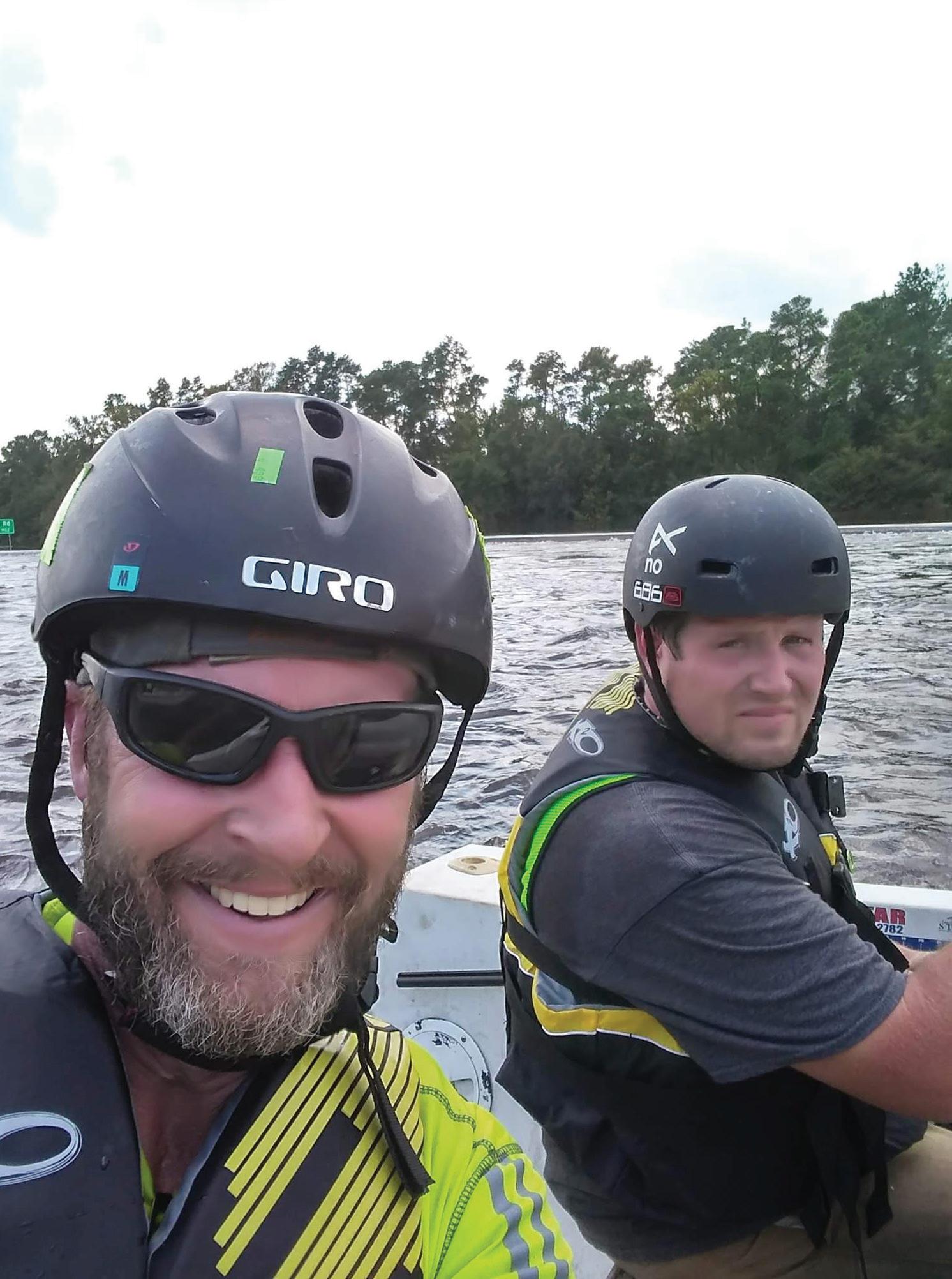

ment agencies at the local, state, and federal levels, in addition to the traditional volunteer/nonprofit relief agencies, and to see what could be done to fill in the gaps and provide support where needed.
Volunteers were operating out of their own pockets and funds were running low in Texas. I realized my son and I had not come prepared nearly enough, but had done okay with what we had. We exchanged phone numbers and contact info with our new friends, and it was time for us to go back to Michigan. But I wasn’t done yet—I planned on going home and making some phone calls. And that’s exactly what I did.
My cousin Leon is a retired Genesee County Sheriff from the Flint Michigan area, and he and his family had just moved a few years prior to Chocowinity, North Carolina, where he took up a job as Lieutenant for the Chocowinity EMS department. He had been following me on Facebook and social media along with my son Ryan on our adventure in Texas, mainly because I think he had the same concerns for us as I had for my son when he first called me. I called Lee and told him “I think I found my calling.” I explained to him that I was thinking about going to get my EMT certificate, and wanted some information from him about it. He told me there are a couple places in Michigan to call, and we left it that. Upon arriving home, my wife, Dawn, sensed a change in me. She could tell I was excited about helping people, and really felt there was something I could do about it with my background. After being home about three days, I received a phone call from one of the guys in the Cajun Navy. Another hurricane was coming. This one was named Irma, and it was expected to hit Florida as a Cat 4 in just a few days. He and some of the guys were going to meet in Pensacola, the Pan-
handle of Florida, and ride the storm out, then head south to start rescues where needed. He asked me if I was going to be able to go on this trip, and I told him I was in, but that my son wouldn’t be able to make this trip, and I would have to find someone else to go with.
I reached out to my lifelong friend, Dave McKellar, also an Army veteran. Dave himself had just been fighting a long bout with cancer, and I wasn’t sure if he was up to it or not. I called him, and Dave told me he wasn’t able to make this trip, still feeling weak from his cancer treatment and all, but he didn’t want me to go without preparing me first. He asked me to come over, saying that he had some equipment and supplies I was going to need. When I got there ,Dave and I talked about my experience in Texas with hurricane Harvey. He too had been following me on social media. Dave himself had been involved in some veterans groups that had done some search and rescue in the past. He had some experience with this kind of thing. He loaded me up with chainsaws for removing trees blocking roadways, tow straps, 55-gallon drums for diesel fuel, floatation devices, different colored marking tape, and a lot of other stuff including $150 for a new battery in my truck. (Lesson 4: be prepared). But who was I going to call now? Most of my friends were working and couldn’t just leave their jobs. My friend Steve Gilson, another lifelong friend from high school, was a subcontractor in the construction field. I reached out to him and asked to if he was up to going down there with me. Steve check his schedule, made a few changes and on September 9th, 2017 we headed to Florida. My education in emergency management and my vision of S.T.O.R.M. was just beginning. CERT
20 CERT Responder Magazine
My son Ryan and I We rescued animals too
Do You Remember Your
SEARCH MARKINGS?
Please check your local markings if they differ
SEARCH MARKINGS
Team Time Entered 2/15/08 In: 1430 Out: 1515 EXAMPLE 2L Moved
Date Searched Time EXited
VICTIMS Hazards
CERTResponder.com 21
to
1-2
to FL-3 Unsafe CERT-23 Single Slash=Team in Building X=Team Has Left Buildings BUILDING MARKINGS Good Structurally Sound May Become Structurally Unsound Bad Structurally Unsound
CERT-23 Med Ops FL
Searched Stairs

UNITED HATZALAH:
Saving Lives In a Matter Of Minutes
BY LINDA SPALL
Your cell phone sends an urgent alert: person with possible heart attack collapsed in a busy intersection on Main Street near you. You answer the call by hopping on your motorcycle, fully equipped with the main emergency needs. Circumventing the congested, nonmoving traffic jams which have stood immobile due to the crisis, you are there within 3 minutes. You perform CPR and you stay with the victim until the ambulance arrives. Amazing. This is a dream of the future. Unless, you live in Jerusalem. Or maybe Jersey City, New Jersey!
22 CERT Responder Magazine
The United Hatzalah’s non-profit organization has more than 5,000 volunteers, answering over 1,000 calls a day using alerts on cell phones. Hatzalah means “rescue” in Hebrew. With 750 motorcycles that can go most anywhere and presently, 37 ambulances, these trained rescuers have an average response time of 3 minutes! They save thousands of lives each year across Israel, are available 24 hours a day, seven days a week, and are a free service, no matter your religious affiliation, race, or national origin.
By using GPS technology, their “Ambucyles”, trained volunteers, are available even on holidays. Professional emergency responders such as police, EMTs, paramedics, and doctors are on call 365 days a year. Volunteer medics take a 200-hour course and take 100 training calls to qualify as EMTs. Once they pass exams, they receive a rescue bag and phone.
This is no ordinary organization, run by no ordinary man. As a small child, president and founder, Eli Beer, witnessed the bombing of the #12 bus in Jerusalem on June 2 1978. (6 people were killed and 19 injured). By the age of 15, he volunteered on an ambulance, attended school, and worked in his family’s business. By the age of 17, he was organizing a better way to improve
emergency response times. Eventually, he became familiar with a technology which was a GPS communication system able to locate and dispatch the five closest EMS responders to the site where help is needed. He began to organize a similar model which was being used in New Jersey, and launched a volunteer unit in his Jerusalem neighborhood. The amazing part of this story is that the community residents in his Jerusalem neighborhood funded the unit’s communication gear, medical equipment, and supplies, independent from the city. Hatzalah Jerusalem was born in 1992. The name changed to Hatzalah Israel after the creation of many other chapters that became established throughout the country. In 2006, the name changed yet again to United Hatzalah, since the organization included and still reflects all people regardless of religious beliefs, all working together to save as many people as possible.
United Hatzalah was the first EMS to introduce the Ambucycle, a motor scooter equipped with a trauma kit, defibrillator, blood sugar monitor, oxygen tank, and general first aid kit. The ambucycle can go around obstacles and do things that an ambulance cannot do, such as ride on the sidewalk if necessary, and travel down narrow streets and path-
ways where cars can’t go.
In twenty-five years,the organization has grown to more than 5,000 volunteer medical responders treating over 300,000 people per year. Funded by the communities, donations, and other organizations, all services are provided free of charge to all citizens regardless of race or religion.
Eli Beer wants the services to go worldwide. He has assisted internationally by bringing his knowledge and expertise to South America and other countries including Jersey City, New Jersey, the first in the US to use the system with response time down to two minutes and thirty-five seconds. The Jersey City program is known as Community Based Emergency Care (CBEC). Check out their Facebook page United Rescue. In case you are wondering about liability issues, the volunteers are protected under the New Jersey Good Samaritan law.
For further information, please see www.israelrescue.org and check out the “donate” page. Visit the “blog” section of the website for amazing stories of these everyday heroes. https://israelrescue.org/ blog Be inspired! Would this work in your area? What questions do you have regarding the program? Write us and tell us what you think. Our facebook page is CERT Responder Magazine. CERT

CERTResponder.com 23
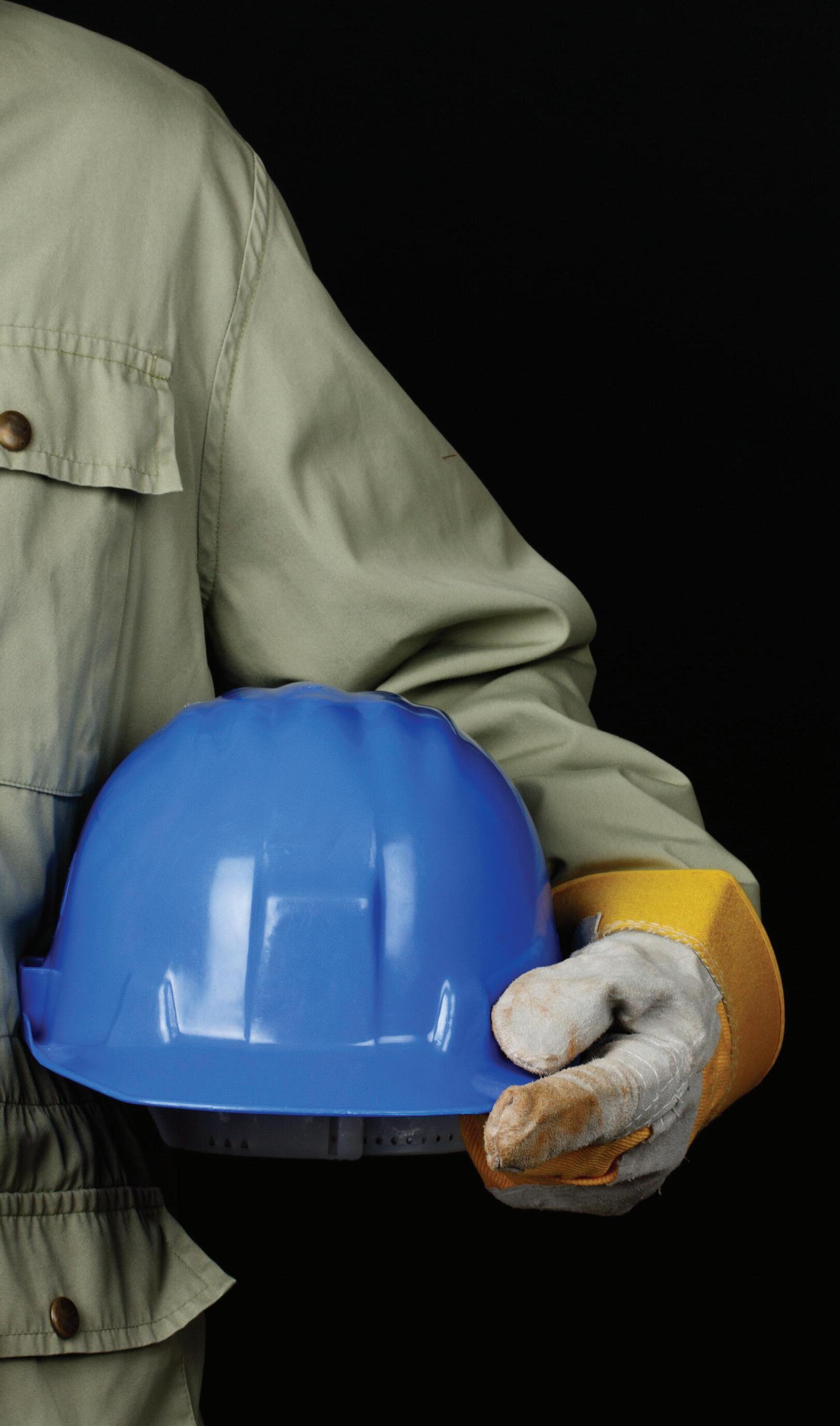
Safety During a Disaster Response Knowledge and Experience:
BY BRETT POSTELLI
SAFETY LEADERSHIP
I am often asked “What kind of training or certifications do I need to be a safety officer in disaster response?” I have worked with safety managers who have PhDs without a lick of experience and I have worked with safety personnel who have lots of experience, with very little training and education. What makes a good safety manager or officer is possessing the knowledge “AND” experience. Whether you have the college degree or not, “common sense” is critical.
OSHA uses the term Competent Person to describe someone with common sense and defines them as, “one who is capable of identifying existing and predictable hazards in the surroundings or working conditions which are unsanitary, hazardous, or dangerous to employees, and who has authorization to take prompt corrective measures to eliminate them.”1
So, what makes someone a safety expert? An expert is someone who has a prolonged or intense experience through practice and education in a particular field. I have built a diverse array of experiences within my 29 years of combined experience in emergency and disaster response and have completed thousands of hours of training.
24 CERT Responder Magazine
ASHBRITT’S SAFETY CORNER
DISASTER RESPONSE SAFETY CHALLENGES
I often hear, “Safety? What’s the big deal? Safety’s safety!” Well, safety during a disaster response entails much more than standard construction site operations safety. There are many intricate details and overlapping regulations that make disaster safety unique. There are complex moving parts, and the job site is dispersed throughout the community. In fact, it is not uncommon for the whole community to become the job site. When you go to a standard construction site, the job and safety concerns are more clearly defined. Safety is always an intense challenge, but non-disaster safety is more predictable and straight forward than disaster safety. In disaster response, the job tasks and associated safety risks are vast and in constant flux. You must first consider what phase of the disaster are you part of? Pre-planning, response, or recovery and what each phase entails. For example, pre-planning and recovery allow for more time to prepare site safety than during a response situation. You must also remember to consider the interactions between different agencies as well as the private sector.
IDENTIFYING HAZARDS
Safety is a mindset. You must learn to recognize threats to personnel safety, and to recognize and identify hazards you may have never encountered. The number one priority is to ask the 5 W’s (Who, What, When, Where, and Why) of what could hurt or kill in a particular environment. Once you recognize a hazard, you must communicate the hazard and the methods to mitigate it to all affected response personnel. Hazard recognition or risk analysis is one of the most challenging aspects of being a safety manager during any phase of a disaster. We have to see everything, think of everything, and NOT miss anything.
BEING A SAFETY ENFORCER
As far as I am concerned there is no such thing as a safety observer. Either you are a safety enforcer, or you are not. If you are not going to respond, react, or handle the situation—why are you there?
Safety is always an intense challenge, but non-disaster safety is more predictable and straight forward than disaster safety.
A good safety manager or officer holds everyone accountable for their actions. They teach, coach, and guide personnel who are less experienced or who are not working safely, they look for “best management practices” or safer ways to perform job tasks.
THE HUMAN FACTOR
During a disaster response, expect a wide range of knowledge and levels of experience, from those who have never worked a disaster to the veterans with 20 plus years’ experience and everyone in between. Personnel have a variety of job functions to perform, and they have to work alongside other responders with different levels of experience, work ethics, and levels of awareness. An individual’s safety considerations are often dependent on the person’s experiences and their perception of hazards. We only know, what we know. We must be aware of this in planning for the safety of individuals, teams, and the wider community.
In closing, strive to be the best you can be at everything you do. Get as much training, education and experience as possible. Remember disaster response safety is different from a “standard” project. Take your life lessons with you wherever you go, (good and bad) and remember that everyone brings their own valuable life experiences to the table. Look at things from all angles with eyes wide open and have your head on a swivel. Have a questioning attitude and use the 5 W’s when you step into every situation. Finally, be a safety enforcer: People’s lives depend on it. CERT
1 https://www.osha.gov/SLTC/competentperson/index.html

Brett Postelli, has 29 years of experience in public safety and private sector emergency response operations. Brett began his career in public service in 1989 as a certified firefighter and medical first responder. In 1994 he graduated from the Kalamazoo Valley Regional Police Academy in Kalamazoo, Michigan. For the next ten years, Brett served as a State of Michigan certified firefighter, medical first responder and sworn police officer. In 1998, Brett moved on to serve as a U.S. government contractor responding to environmental emergencies and natural disasters, providing support work and technical rescue for nuclear facilities throughout the U.S., serving as an armed federal security contractor and communications technician in the Washington, D.C. area. Brett is a published author, (Hazwoper Handbook – 8-40 Hr. Hazardous Waste Operations & Emergency Response, ISBN-10: 1537136453, ISBN13: 978-1537136455) and holds a number of national and international certifications in firefighting, emergency medical response, hazardous materials, explosive ordnance disposal, rescue diving, technical rescue, anti-terrorism, and communications electronics. Brett has served as the Environmental Health and Safety Manager for AshBritt Environmental for the past 9 years and was awarded a safety challenge coin from the U.S. Army Corp of Engineers during the Northern California Wildfires in 2017.
CERTResponder.com 25
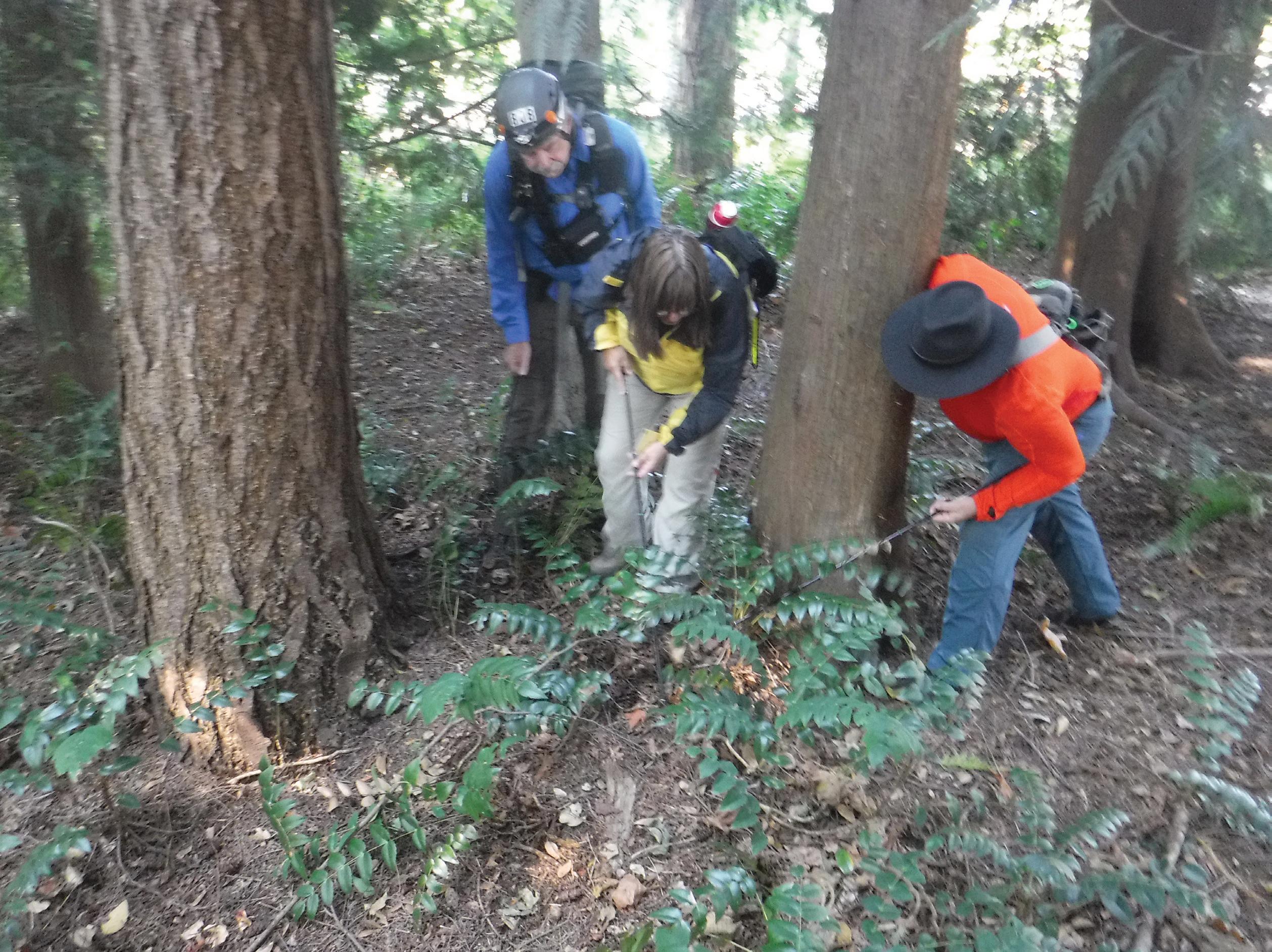
TRACKING: Not Just for Search and Rescue!
BY DIETRICH BIEMILLER
CERTvolunteers are known for service, but many members would like to experience actual mission time in addition to the many hours of training they invest in. Many CERT volunteers join Search and Rescue teams to sharpen their skills and provide service to their communities on a smaller-than-disaster scaled basis.
Snohomish County SAR is no exception. There are many CERTs in their over 300 strong ranks. Snohomish County is atypical of many areas, as we have an urban center, saltwater, swiftwater, and rugged mountains all in the same county.
One of the specialty teams of the Special Operations Group of the Snohomish County Volunteer Search and Rescue organization is the Mantracking Team. The Snohomish County Tracking team formed in 1992 and is now recognized as one of the premier tracking teams in the country.
Today, the SCVSAR Tracking Team is aligned with nationally recognized tracking programs, such as the Joel Hardin Professional Tracking Services Visual Tracking and
Training Institute, and also offers regular in-house training for all SAR personnel.
In SAR, there are search functions and rescue functions. Tracking is a search discipline that can lead to finding the subject. Tracking is not mystical or magical, as one might imagine from movies and TV. It is the art of seeing “sign.” SIGN is all evidence, not limited to footfalls, of a person’s passage. This can include bent grass, broken twigs, compressed moss, dislodged stones, and discarded items, for example.
Experienced trackers can show anyone the physical characteristics of human SIGN and simple techniques on how to follow it. Tracking is simple, but not easy. It takes many
26 CERT Responder Magazine
hundreds of hours to achieve various levels of certification, but one can begin tracking with experienced trackers right away. Anyone can see prints in the mud, but it takes training, dedication and experience to find footprints in forest duff, a grass field, or a gravel parking lot.
Trackers optimally work in three-person teams, with one point-person and two flankers. Beyond the requisite SAR gear, there is little specialized or expensive equipment. The gear usually consists of little more than a tracking stick and eyes.
On searches, Tracking offers a great deal. Tracks are a direct link between the searcher and the lost subject. There are over 2200 steps in a mile, so prints offer the most evidence available for the lost person! Not only can the Tracker provide a direction of travel for other searchers, which cuts down tremendously on resources, but Trackers can provide information about the subject. These “Sign Maker Characteristics” can tell how long ago the subject passed that way (“ageing”), the mental and physical state of the subject, and what the subject was doing.
one’s missions to missing person searches. Often, however, one type of mission leads into the other. The ability to not only follow the path of the subject, but also interpret the sign maker’s characteristics, proves especially valuable in crime scene investigations, an area in which Snohomish County Trackers excel. Snohomish County Trackers have been called in to numerous murders, suicides, abductions, assaults, mass shootings, arsons, and all manner of other crimes over the years.
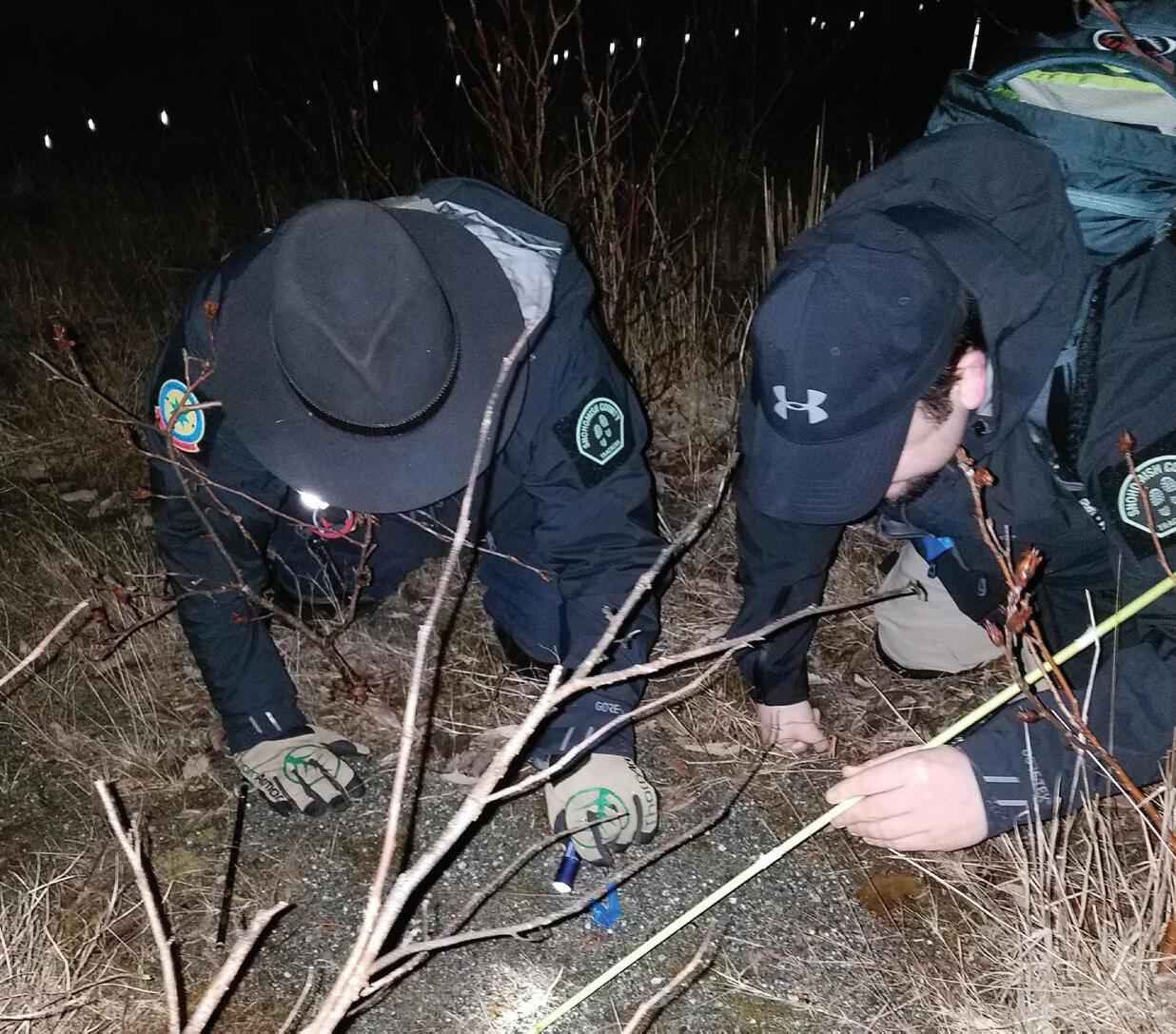
There are over 2200 steps in a mile, so prints offer the most evidence available for the lost person!
Tracking operations can be used not only for search missions for lost people, but for providing assistance to Major Crimes Detectives in crime scene investigations. Not all are inclined to serve as Crime Scene Trackers, however, and it is entirely possible to limit
A recent mission provides a perfect example of search tracking evolving seamlessly into a possible crime scene tracking. On a Tuesday night, a van was found pulled off onto the side of an unpaved mountain road in the Cascade Range. The Driver’s side window was down, the driver’s wallet was in the front seat, but there was no driver. The investigating officer called out the SAR Deputy, who dispatched three trackers and one dog team early the following morning. We were informed that the identification documents had revealed that the driver had left his apartment on the previous Sunday afternoon to take a friend home, and had never returned.
Once upon the scene, the tracking team approached the vehicle first. We identified the prints of the investigating officer, and immediately saw prints that must have belonged to the driver exiting the car, moving towards the
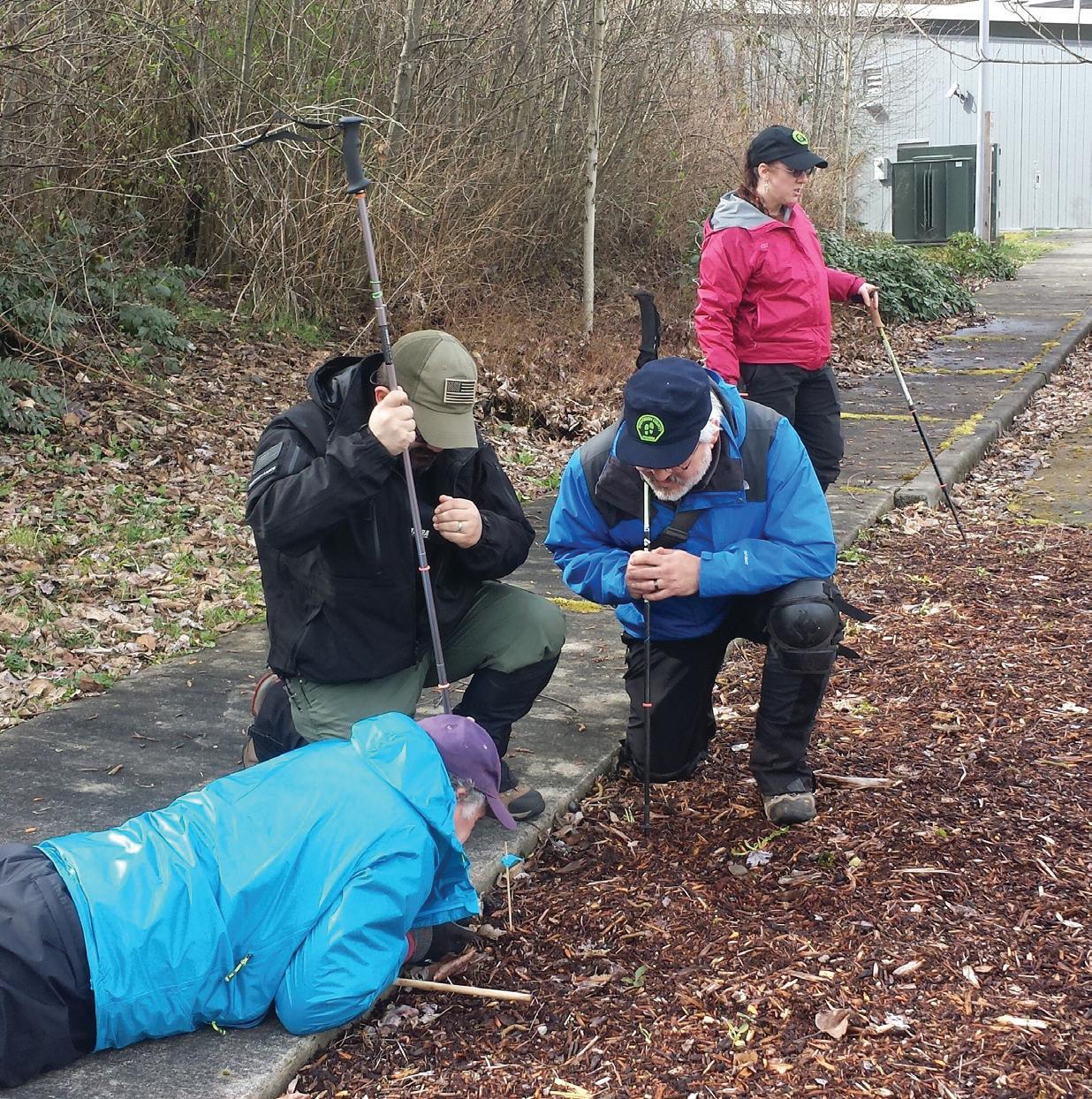


hood. A review of the tires showed mud all around the tread of the tires, which indicated that the driver had become stuck and the wheels had spun. He appeared to have stood at the front of the car and attempted to push the car out, but was unsuccessful. We then found the faint remains of prints leaving the area of the vehicle and walking into the surrounding forest down a steep embankment.
We followed the prints, using step-
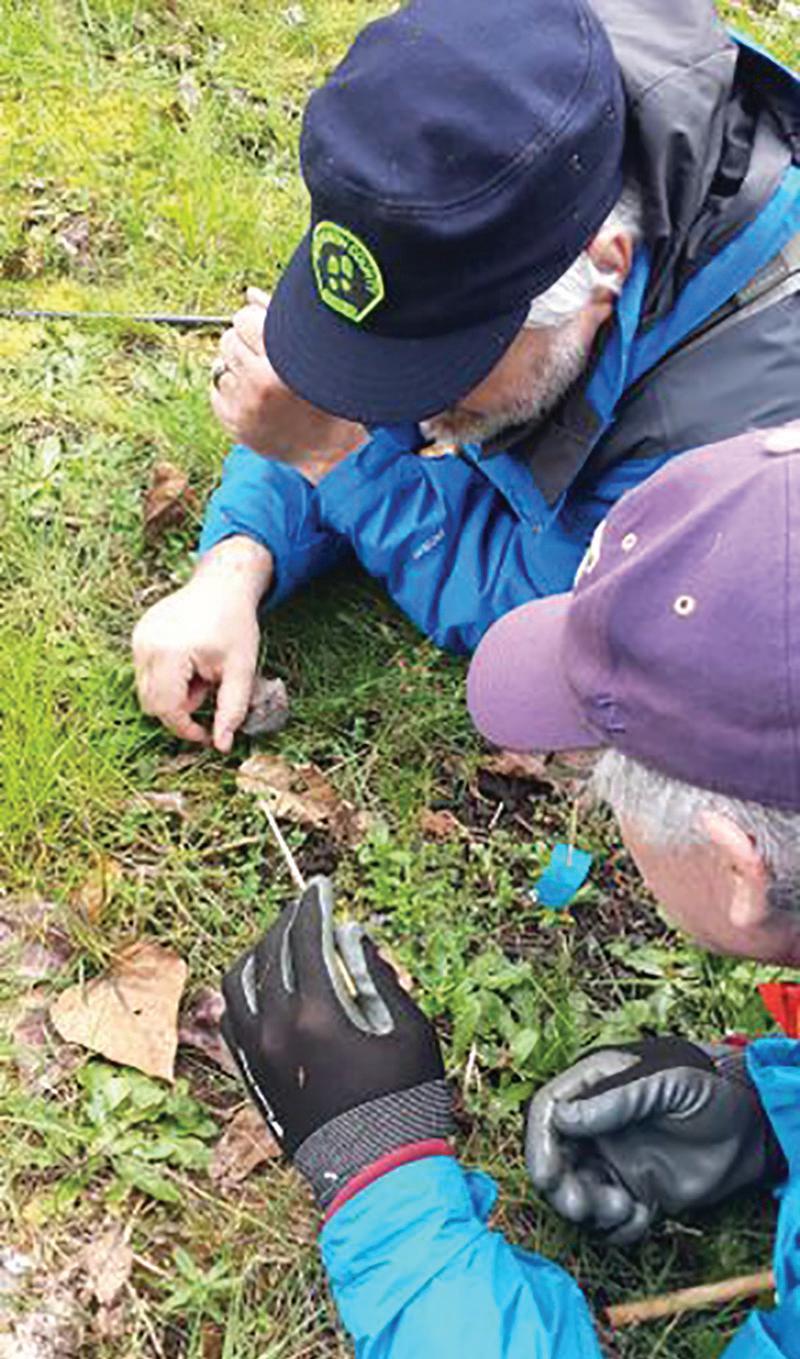

by-step tracking techniques, until the subject began to walk back and forth at a certain elevation. We found his eyeglasses in a small dug-out area. A short distance past that point, we discovered one of the subject’s shoes. With the direction of travel now established, we called up to the top of the slope for the K-9. The dog and handler bounded past now that they had a manageable area to search, while we continued our track. Within five minutes, we heard the ex-
cited baying of the dog, indicating that he had found the subject.
Unfortunately, the driver was deceased. But now the accompanying deputies asked that we “change hats” to determine whether the subject had died of natural causes in the frigid conditions of the mountains, or if he had been murdered. We continued down to the area where the gentleman had been found, and thoroughly detailed the ground to determine whose prints
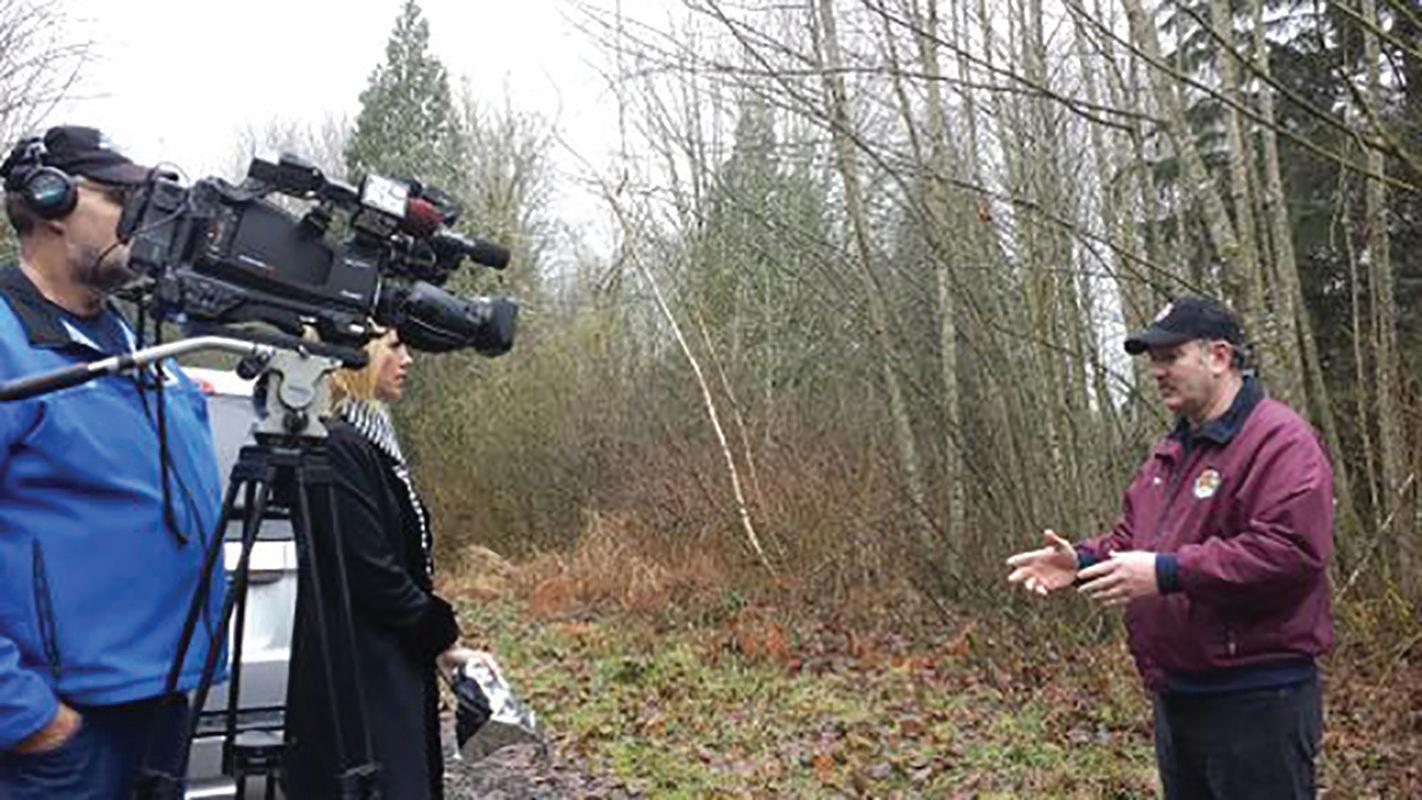
28 CERT Responder Magazine

belonged to the deputies and dog handler, whose were the subject’s, and whether there were any unknown prints that might have belonged to someone else who might have been present at the time the subject’s were made. Fortunately in this case, we did not find any prints that might have belonged to an unknown person, and our observations were used to corroborate a finding that the subject had died of exposure. This is not always the case, however, and Trackers have been called in to testify as Expert Witnesses at criminal trials.
This is unusual for volunteers. Most crime scenes and trial testimony is the purview of paid professionals, but our members are entirely volunteers. Although
Tracking operations can be used not only for search missions for lost people, but for providing assistance to Major Crimes Detectives in crime scene investigations.
they are volunteers, our Tracking Team members train diligently and approach each mission with as much professionalism as any paid personnel. Snohomish County Trackers have earned a high reputation not only in our county, but around the state and country. They work hard to keep that reputation.
If you have an interest in learning how to Track, you are encouraged to contact your local Search and Rescue organization and inquire into this exciting and fascinating art. Feel free to contact me with any questions, or you can review our webpage and its referencing links at www.scvsar.org/special_operations/ man-trackers. CERT

CERTResponder.com 29

MASS NOTIFICATION SYSTEM
Benefits County Residents
BY COLENE MCENTEE, ST. CHARLES COUNTY GOVERNMENT
The residents of St. Charles County, Missouri, are no strangers to the power of Mother Nature. The third largest county in the state, and one of the fastest growing, it is also more than 40 percent flood plain. Managing and handling the rivers outside their boundaries is a regular occurrence and way of life for many residents.
Mother Nature, though, has been a little “heavy-handed” over the past six years.
In late May and early June 2013, the county was faced with two natural disasters at once: an EF3 tornado along the Missouri River, and flooding along the Mississippi River. More than two years later in December 2015, torrential rainfall caused widespread flooding in many areas of the county that had never seen it before. For the first time in county history,
floodwaters shut down Interstate 70 for a day. Keeping residents safe and informed was St. Charles County Government’s priority during and after these events, and the fact that there was not one major injury or fatality demonstrated its success.
“For the tornado and flood evacuations, the St. Charles County Division of Emergency Management (DEM) used outdoor warning sirens to immediately notify residents. In the aftermath, communications staff worked with the media
30 CERT Responder Magazine
Aerial photos of May 31, 2013, tornado damage in St. Charles County.
Photo: St. Charles County Government
to communicate safety, cleanup, and recovery information, and directed citizens to our website and social media accounts,” says County Executive Steve Ehlmann. “We received positive feedback from the community, but wondered each time whether additional, and more efficient, communication could have taken place to help our residents.”
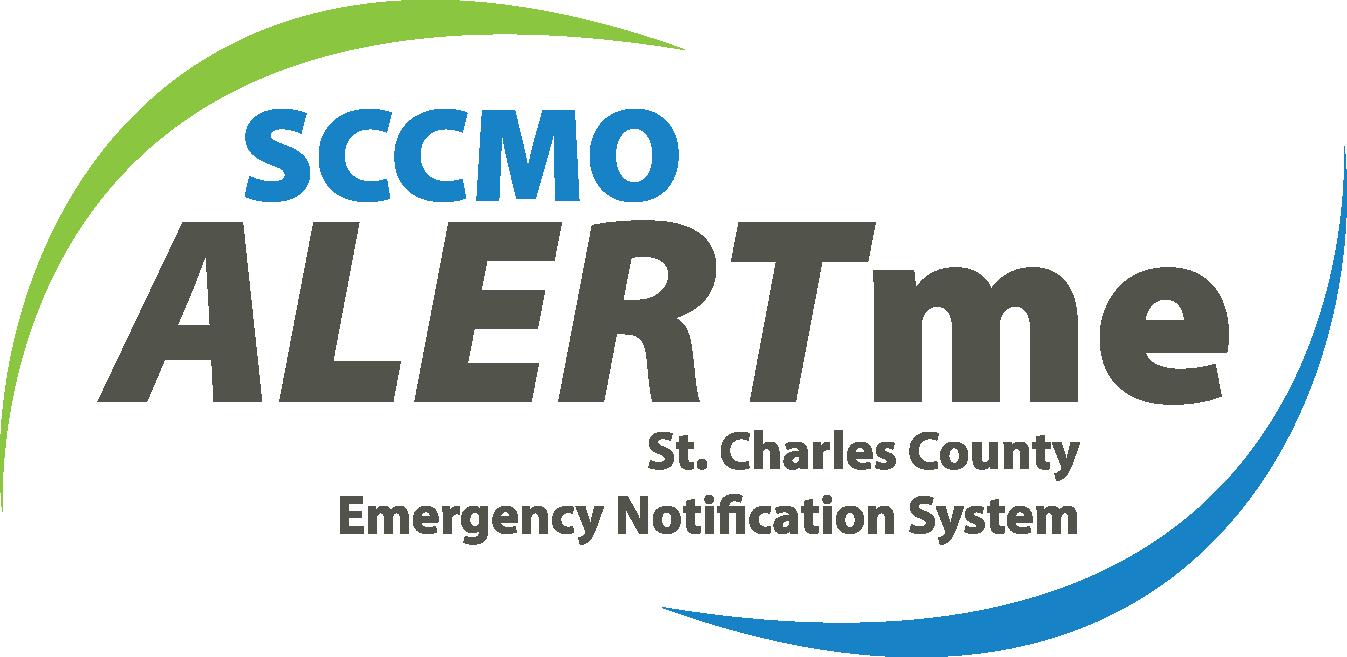
These events inspired St. Charles County Government to explore mass notification systems as another way to communicate faster with residents, staff, and community partners during an emergency and other urgent situations to keep them safe. After engaging in an RFQ process, the County selected Everbridge for its ease of use and messaging capabilities. Administrators can send messages on a computer or mobile device, and the system allows users to receive notifications by text, email, or phone call, as well as confirm message receipt. The service was purchased and continues to be funded through the County’s Capital Improvements Sales Tax.
The County is launching Everbridge through a three-phase pro-
cess: internal, public opt-in, and municipal onboarding. The County’s Information Systems (IS) Department led the internal phase by working with departments to register all current employees in the system, and working with Human Resources on a process to sign up new employees. Regular testing of the system is conducted by the County’s Communications Department to ensure employees recognize the messaging and practice confirmation receipt. Additionally, IS worked with department directors and the DEM in the internal phase to create messaging groups unique to their needs.
“During weather events and activations, we have to get information out to directors and other agencies quickly,” says Captain Chris Hunt, DEM Director. “Before Everbridge, we had to rely on separate and multiple emails and phone calls. The ability to put a message in the system and let it do the distribution work makes us more productive and streamlines our communication. The confirmation receipt feature has been extremely helpful in ensuring contacts receive information.”
After internal integration, the County’s Communications
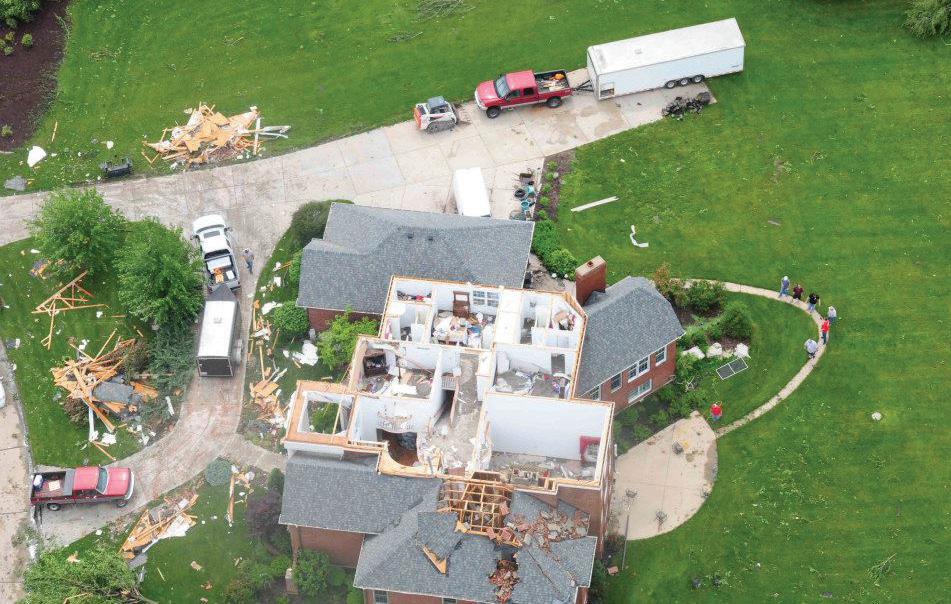
CERTResponder.com 31
Aerial photos of May 31, 2013, tornado damage in St. Charles County. Photo: St. Charles County Government

Department began to develop the public opt-in side of the system. Communications staff met with core departments involved in emergency situations—the County’s DEM and the Highway, Police, and Public Health departments—to create message categories and definitions. “SCCMO AlertMe” was chosen as the name for the system to make it unique to St. Charles County Government and easily recognizable by residents.
SCCMO AlertMe debuted a week before Thanksgiving in 2018. Citizens create an account through sccmo.org/AlertMe and sign up for one or all of the following message categories:
• Emergency Management Alerts from the DEM cover natural disasters, including flood evacuations and related major/ emergency road closures; public safety emergencies; and other county-wide safety concerns. (Note: notifications about thunderstorms and tornadoes are available through the National Weather Service.)
• Health Alerts from the Department of Public Health encompass mass outbreak/pandemic information, including illnesses and food poisoning, in addition to county-wide animal
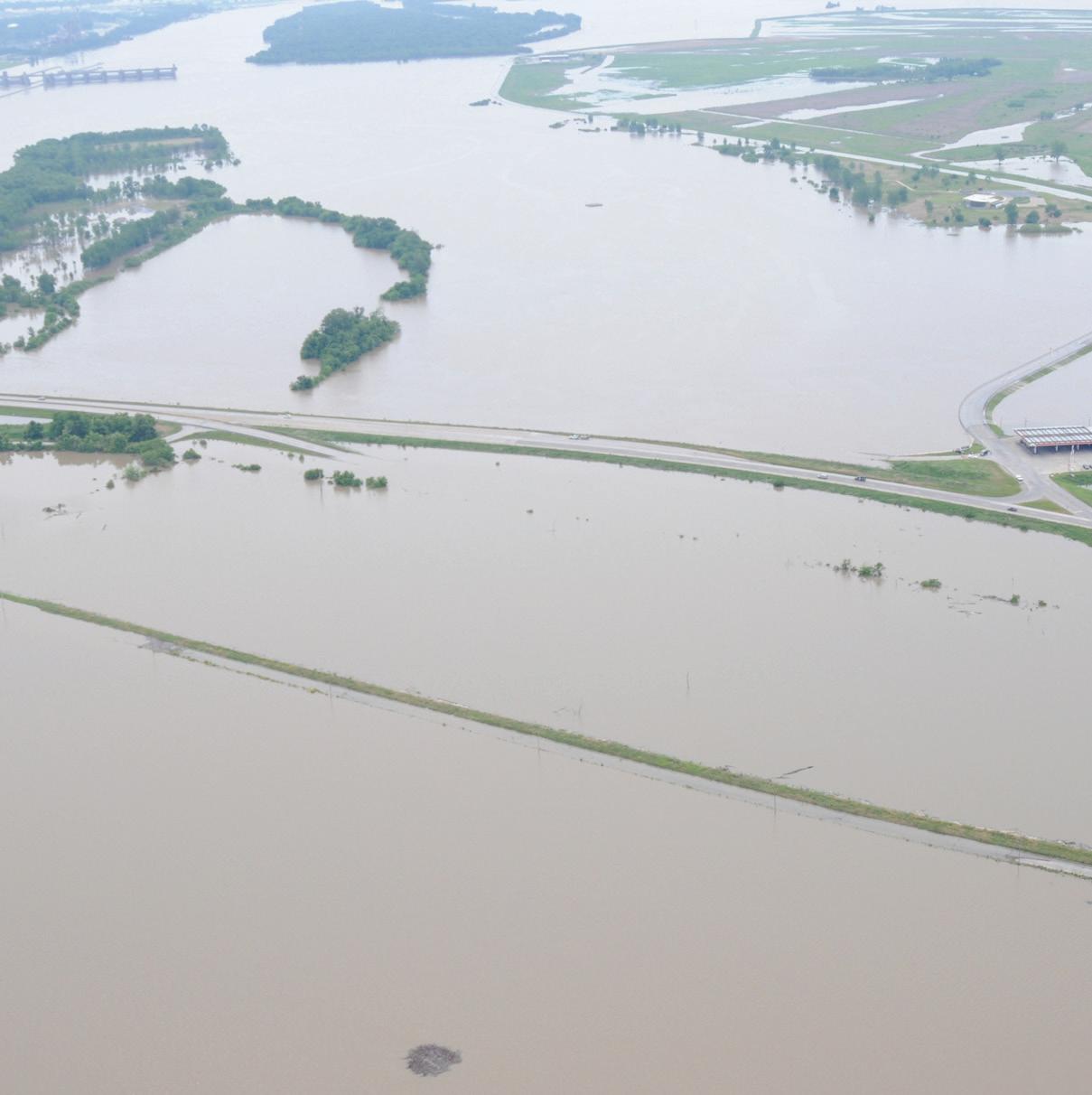

control concerns.
• Police Alerts from the Police Department include missing persons, manhunt information, and county-wide safety concerns.
• Road Construction and Closure Alerts from the Highway Department cover road construction and related road closures by the department.
In three months since the launch of SCCMO AlertMe, more than 700 residents signed up for the system. Its first use notified subscribers about a missing teenage girl.
“Emergency Management staff encourage citizens to have multiple ways to receive news, alerts, and information, and this is a valuable resource. My hope is everyone in St. Charles County signs up for SCCMO AlertMe,” Captain Hunt says.
The final phase of Everbridge integration for St. Charles County Government is to work with onboarding local municipalities and expanding the SCCMO AlertMe brand to include their messaging categories. The steps and timeline for this phase are still in development. CERT
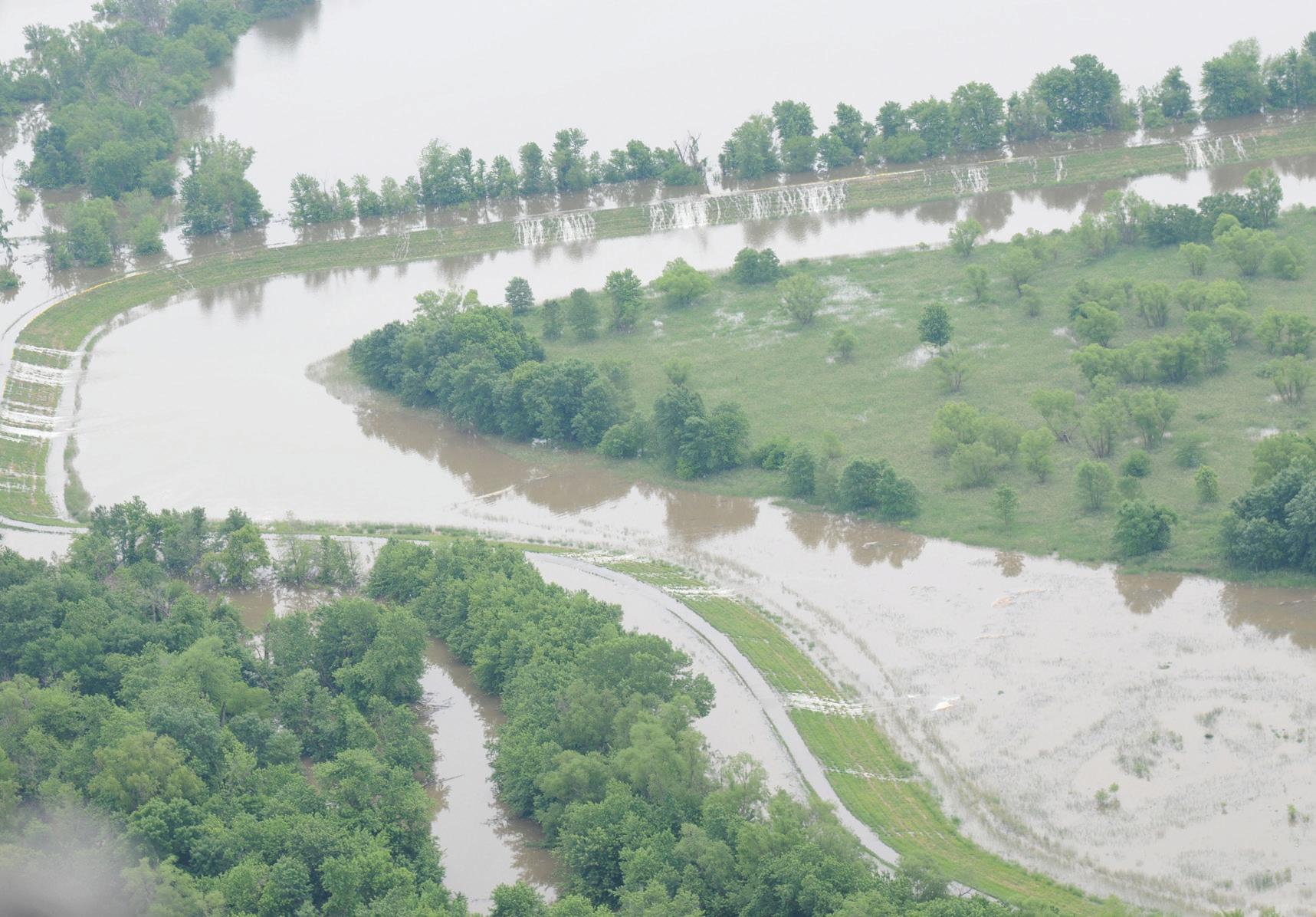
32 CERT Responder Magazine
Citizens register for the SCCMO AlertMe system online at sccmo.org/AlertMe.
Photo: St. Charles County Government
Aerial photos of June 4, 2013, flooding in St. Charles County. Photo: St. Charles County Government
Aerial photos of June 4, 2013, flooding in St. Charles County. Photo: St. Charles County Government
Aerial photos of June 4, 2013, flooding in St. Charles County. Photo: St. Charles County Government
GROUND FLOOR OPPORTUNITY FOR THE RIGHT PERSON!
CERTResponderMagazine is searching for an aggressive and experienced salesperson to present our magazine to potential advertisers. This position is commission driven with incentives.
CERTResponderMagazine is quickly becoming the go-to source for CERT groups to share stories, information, and training tips.
If you feel you have what it takes, please send your resume and contact information to Bob@certresponder.com
Michael
Lim, MD, SLUCare physician and the Director of Cardiology at SSM Health Saint Louis University Hospital with violinist Nicolae Bica, a heart attack and cardiogenic shock survivor.

Monterey, California When
It’s Critical.
SSM Health Saint Louis University Hospital is the only hospital in the region to join the National Cardiogenic Shock Initiative (NCSI) and has seen marked improvement in patient outcomes from using the new NCSI protocol.
Thanks to the first responders who administered CPR and identified the signs of cardiogenic shock while transporting Nicolae to SSM Health SLU Hospital, Nicolae is back doing what he loves - playing beautiful music.
ssmhealth.com/CardiogenicShock
CERT on the road

If you have a picture of you or your group holding a copy of CERT Responder Magazine while traveling, please feel free to share it with us so it can be enjoyed by other CERT members. Send your submission to : certstories@certresponder.com. Any picture that we place in the magazine, the sender will be rewarded with a CERT Responder Magazine T-shirt.
CERTResponder.com 33 JOIN OUR TEAM!
©2019 SSM Health. All rights reserved. SLU-STL-17-312522 1/19



34 CERT Responder Magazine CERT MARKETPLACE AGOOD Graphic Design & Creative Direction • Magazines • Publications • Newsletters • Brochures • Advertising • Much More 314.275.2208 shermanstudios.com IS HARD TO FIND Fran Sherman For Design You’ve just found one. tiger@tigertravel.com 314-968-4410 800-875-4410 7967 Big Bend Blvd. Webster Groves, MO 63119 Making Dreams Come True since 1972 TIGER TRAVEL SERVICE Contact Us Today! www.certresponder.com/advertise New! RTIC 30 oz Tumbler $19 and Medical Trauma Kits available $49. If interested call 636-387-7150 FOR SALE
SPRING EVENTS
MARCH APRIL
MARCH 2:
Read Across America Day

MARCH17: St. Patrick’s Day MARCH 9: World Kidney Day

MARCH 22: American Diabetes Alert Dayy
APRIL 1: April Fools Day
APRIL 18: International Amateur Radio Day
APRIL 26: Arbor Day

MAY
MAY 6: National Nurses Day
MAY 12: Mother’s Day
MAY 19-25: EMS Week
MAY 27: Memorial Day
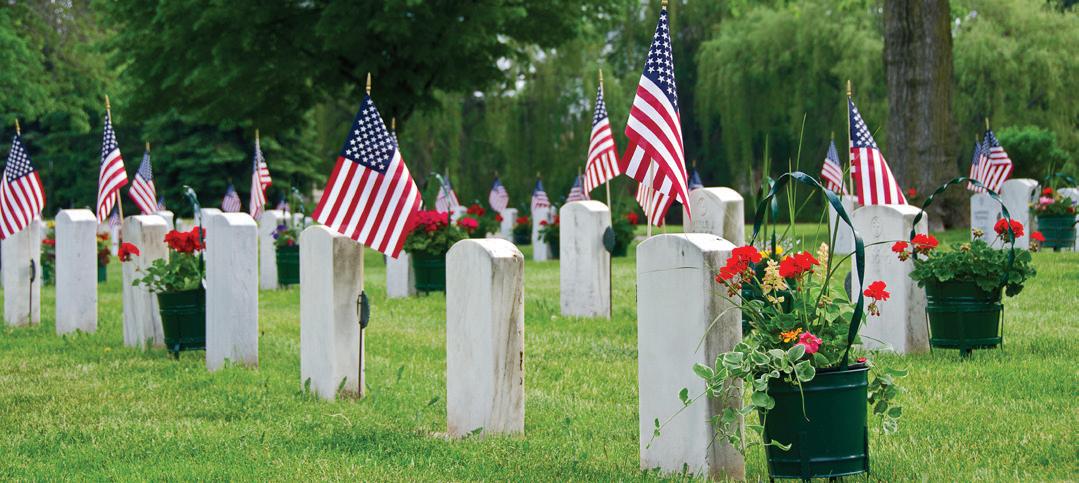
CERTResponder.com 35
ProPac CERT Kits
CERT Kits by ProPac maintain the original standards established by the City of Los Angeles. A concerted focus has gone into making our components stronger, more durable and more efficient. ProPac's current kits are the product of over 20 years of input from CERT responders in the field.
• Kits for every need and any budget
• Custom logo imprints available to ID your team
• Custom kits can be built to your specs
• Quantity discounts available
• Government pricing
• Manufacturer direct quality control
• On Duty® American made 4-in-1 spark-proof tools
• ProLight brand light sticks individually sealed and shelf dated
• Safety vest options: 5-point breakaway design in Neon Class II rated or Green. Include CERT logo with custom ID imprint available
• Flashlights are industrial grade LED-50 hour runtime, Rayovac HD batteries included.

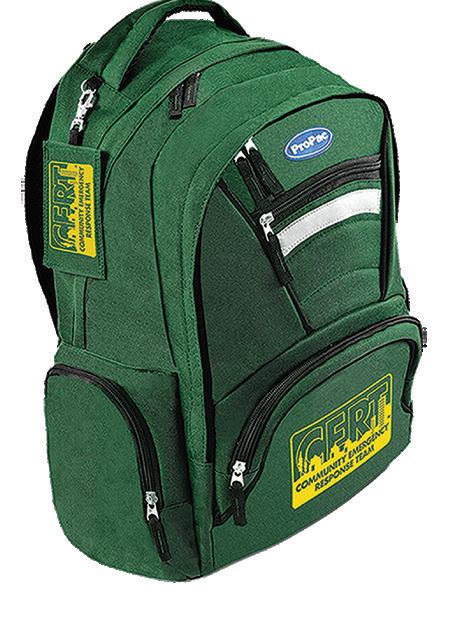


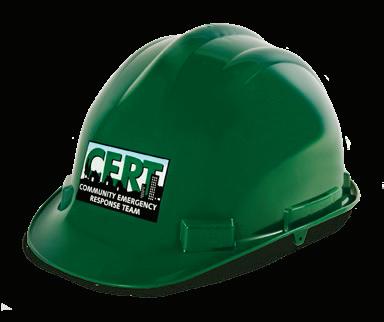
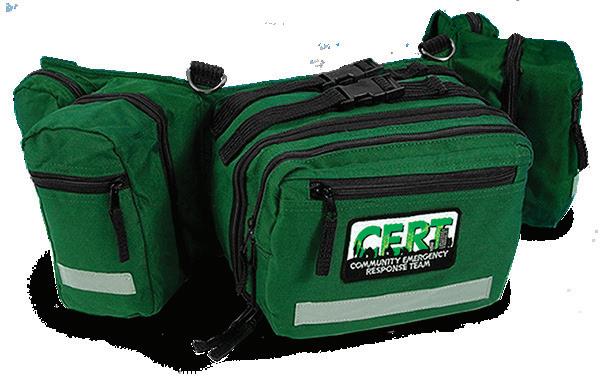
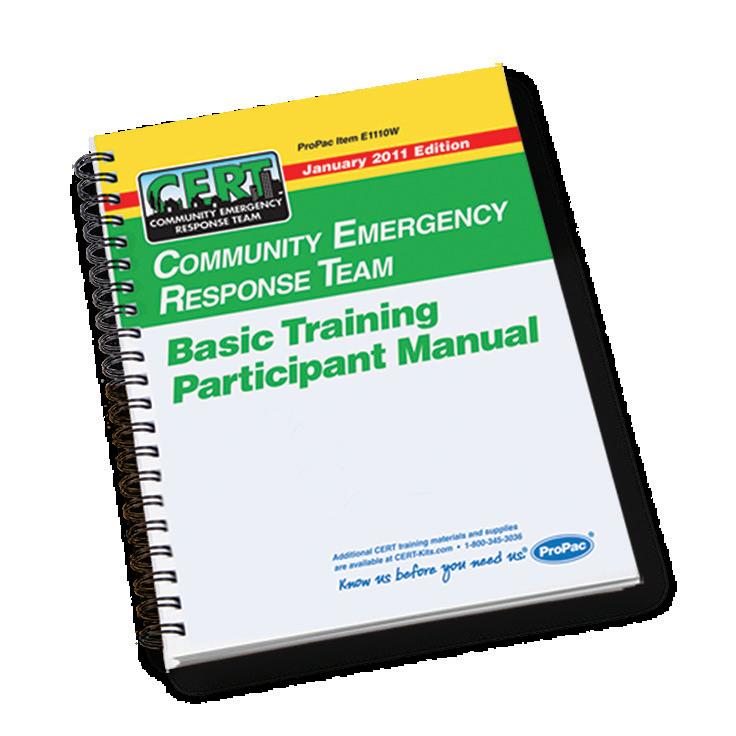

1-800-345-3036 propacusa.com More CERT Teams Count On ProPac Than Any Other Brand No matter how big or small your response call may be, ProPac can outfit your team with precise and reliable equipment, tools and supplies for any emergency situation. It’s vital. It’s dependable. It’s what you need.
ProPac First Responder Pack Item D2018FP ProPac CERT Hard Hat Item C2004-CERT CERT Participant Manual* 2018 Edition CERT Participant Manual for Basic Training. Custom orders available. *Also available in Spanish. CERT Participant Manual On Flash Drive A great way to take your basic training manual to class or into the field with your notebook computer. Item E1110FD Item E1110W Our Team Works For Your Team
CERT
ProPac First Responder BackPack Item D2012-CERT ProPac CERT Duffle Item D2006-CERT CERT
Pro3 CERT Kit shown
Gear and Supplies




























 BY MARK ROSENBLUM, MID AMERICA TEEN CERT DIRECTOR
BY MARK ROSENBLUM, MID AMERICA TEEN CERT DIRECTOR
























































